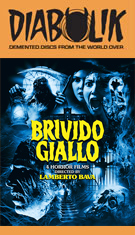
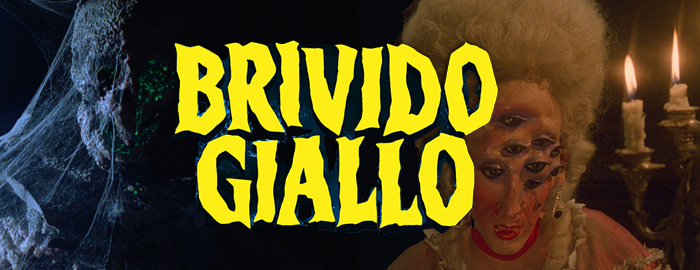
GRAVEYARD DISTURBANCE
Color, 1987, 96 mins. 3 secs.
Directed by Lamberto Bava
Starring Gregory Lech Thaddeus, Lea Martino, Karl Zinny, Beatrice Ring, Gianmarco Tognazzi, Lea Martino, Lino Salemme
Cauldron Films (Blu-ray) (US R0 HD), Mya Communication (DVD) (US R0 NTSC), NoShame (DVD) (Italy R0 PAL) / WS (1.66:1) (16:9)
UNTIL DEATH
Color, 1988, 82 mins. 47 secs.
Directed by Lamberto Bava
Starring David Brandon, Gioia Scola, Urbano Barberini, Marco Vivio, Roberto Pendicini
Cauldron Films (Blu-ray) (US R0 HD), Mya Communication (DVD) (US R0 NTSC), NoShame (DVD) (Italy R0 PAL), X-Rated Kult (DVD) (Germany R0 PAL) / WS (1.66:1) (16:9)
THE OGRE
Color, 1989, 89 mins. 24 secs.
Directed by Lamberto Bava
Starring Virginia Bryant, Paolo Malco, Sabrina Ferilli, Patrizio Vinci, Alex Serra
Cauldron Films (Blu-ray) (US R0 HD) / WS (1.66:1) (16:9), Shriek Show (DVD) (UK R2 PAL), NoShame (DVD) (Italy R0 PAL) / WS (1.78:1)
DINNER WITH A VAMPIRE
Color, 1989, 87 mins. 27 secs.
Directed by Lamberto Bava
Starring George Hilton, Patrizia Pellegrino, Riccardo Rossi, Yvonne Sciò, Valeria Milillio, Isabel Russinova
Cauldron Films (Blu-ray) (US R0 HD), Mya Communication (DVD) (US R0 NTSC), NoShame (DVD) (Italy R0 PAL) / WS (1.66:1) (16:9)
After his greatest international 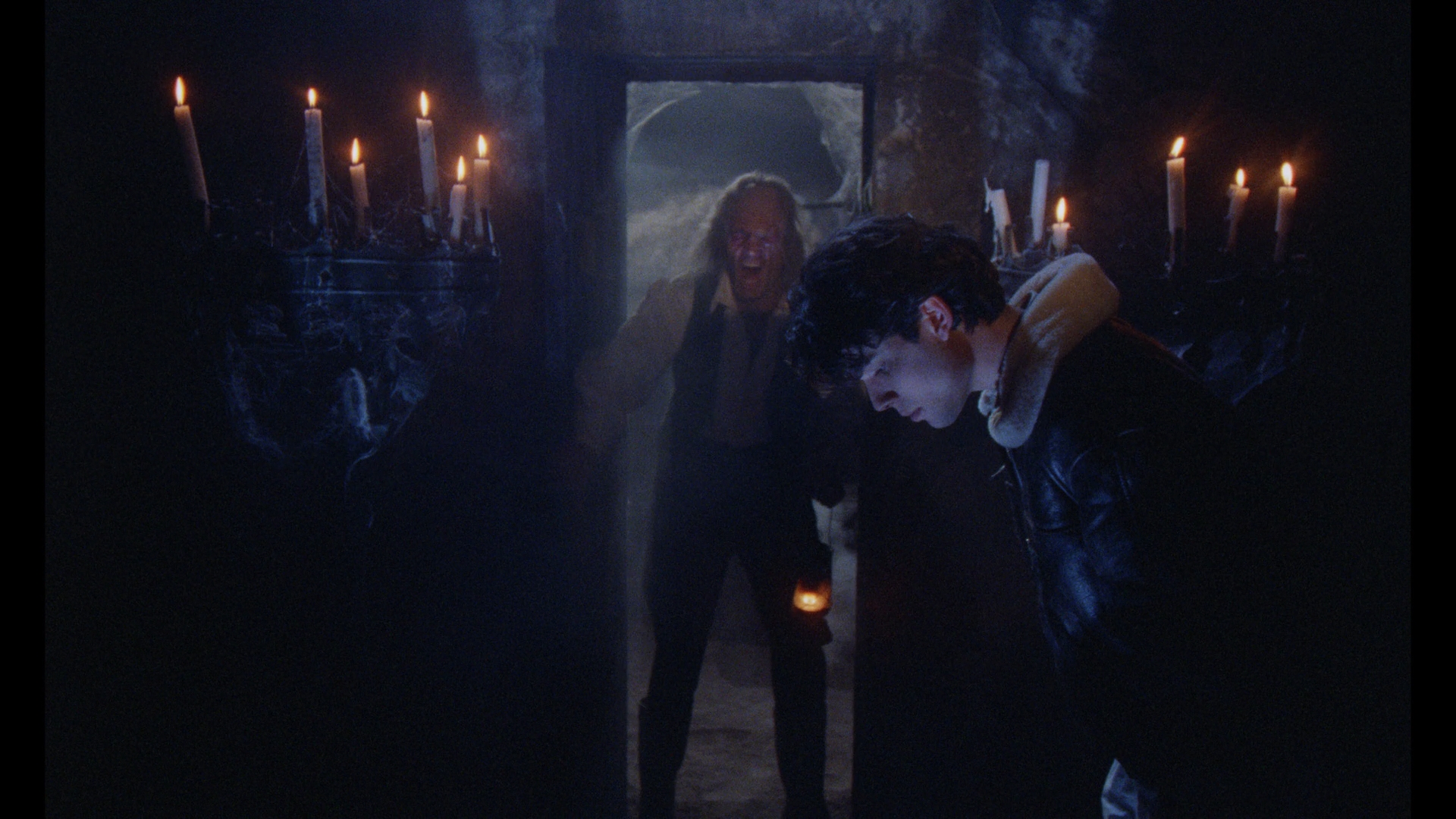 success with Demons and Demons 2, filmmaker Lamberto Bava found himself waiting in
success with Demons and Demons 2, filmmaker Lamberto Bava found himself waiting in 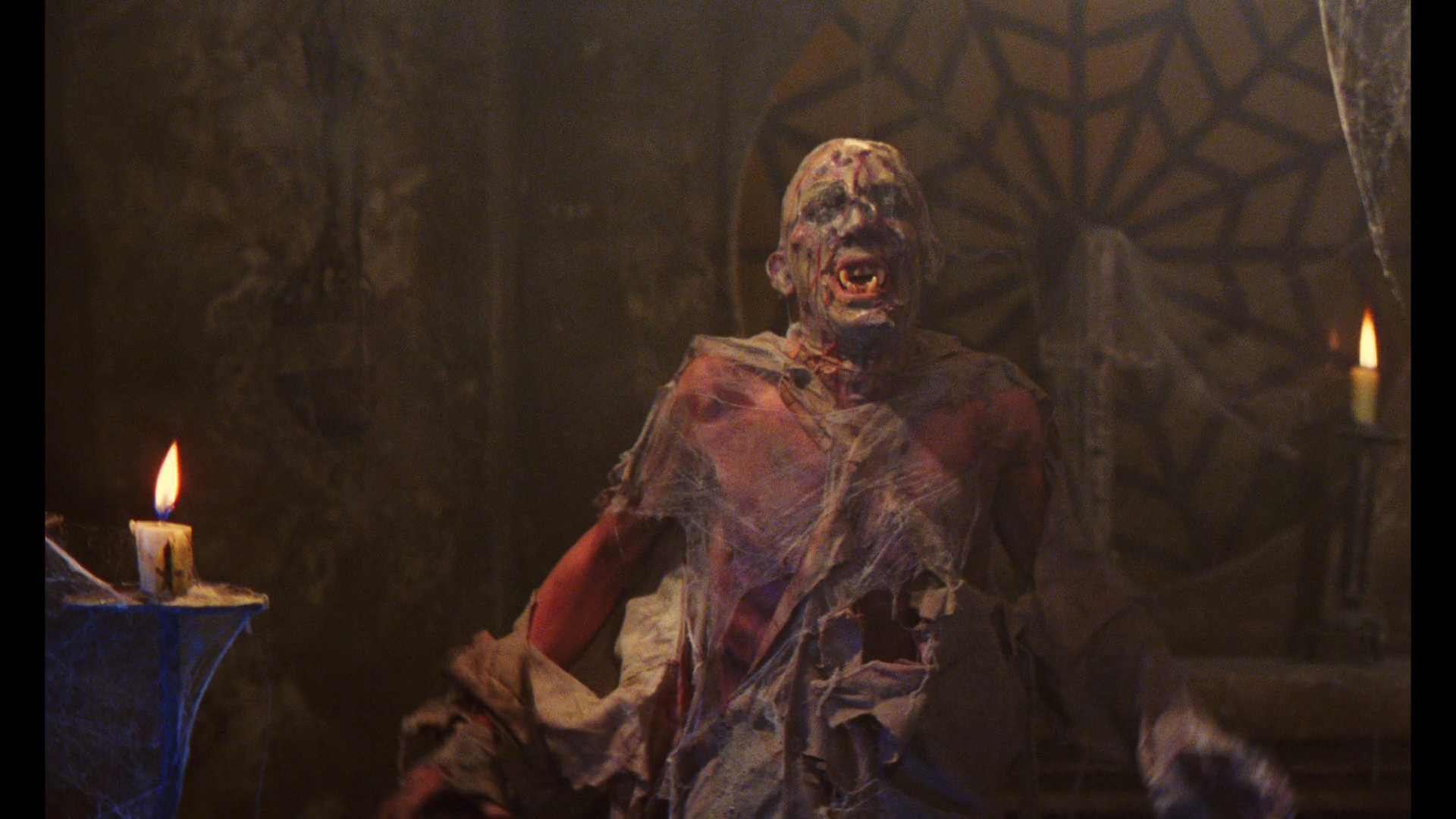 vain for the intended launch of the third film and found himself turning in same direction as most of his peers: television. By the end of 1986, the theatrical market for genre films in Italy and abroad was drying up very quickly, with the small screen offering the more lucrative option for people like himself, Lucio Fulci, and Umberto Lenzi. In a flurry of activity, Bava churned out episodes of the oddball bite-sized giallo show Turno di notte, the stylish made-for-TV film The Mask of Satan, and a four-film series from '87 to '89, Brivido Giallo (or Giallo Thrill). That last project was borne out of an offer from producers including Luciano Martino to put together a quartet of low-cost features from a stack of unproduced screenplays by the prolific Dardano Sacchetti (none of them even remotely giallo-esque, oddly enough), with Bava putting his own stamp on the final scripts in various ways. The first two films were shot in rapid succession with only a weekend in between in 1987, and by the end of the experiment, all of them would end up being seen fairly widely in a variety of home video editions. Bava would later attempt a similar feat in the mid-'90s with another four-film horror series, Alta tensione (or High Tension), which was mostly buried and impossible to see in a decent edition until its 2025 release. On the other hand, Bava also found his greatest success ever in Europe on TV with the wildly popular Cave of the Golden Rose (or Fantaghirò), giving him enough leeway to occasionally dip his toes back in the horror pool from time to time. One issue the Brivido Giallo films have faced since the beginning is the expectations associated with them; while Italian genre production
vain for the intended launch of the third film and found himself turning in same direction as most of his peers: television. By the end of 1986, the theatrical market for genre films in Italy and abroad was drying up very quickly, with the small screen offering the more lucrative option for people like himself, Lucio Fulci, and Umberto Lenzi. In a flurry of activity, Bava churned out episodes of the oddball bite-sized giallo show Turno di notte, the stylish made-for-TV film The Mask of Satan, and a four-film series from '87 to '89, Brivido Giallo (or Giallo Thrill). That last project was borne out of an offer from producers including Luciano Martino to put together a quartet of low-cost features from a stack of unproduced screenplays by the prolific Dardano Sacchetti (none of them even remotely giallo-esque, oddly enough), with Bava putting his own stamp on the final scripts in various ways. The first two films were shot in rapid succession with only a weekend in between in 1987, and by the end of the experiment, all of them would end up being seen fairly widely in a variety of home video editions. Bava would later attempt a similar feat in the mid-'90s with another four-film horror series, Alta tensione (or High Tension), which was mostly buried and impossible to see in a decent edition until its 2025 release. On the other hand, Bava also found his greatest success ever in Europe on TV with the wildly popular Cave of the Golden Rose (or Fantaghirò), giving him enough leeway to occasionally dip his toes back in the horror pool from time to time. One issue the Brivido Giallo films have faced since the beginning is the expectations associated with them; while Italian genre production 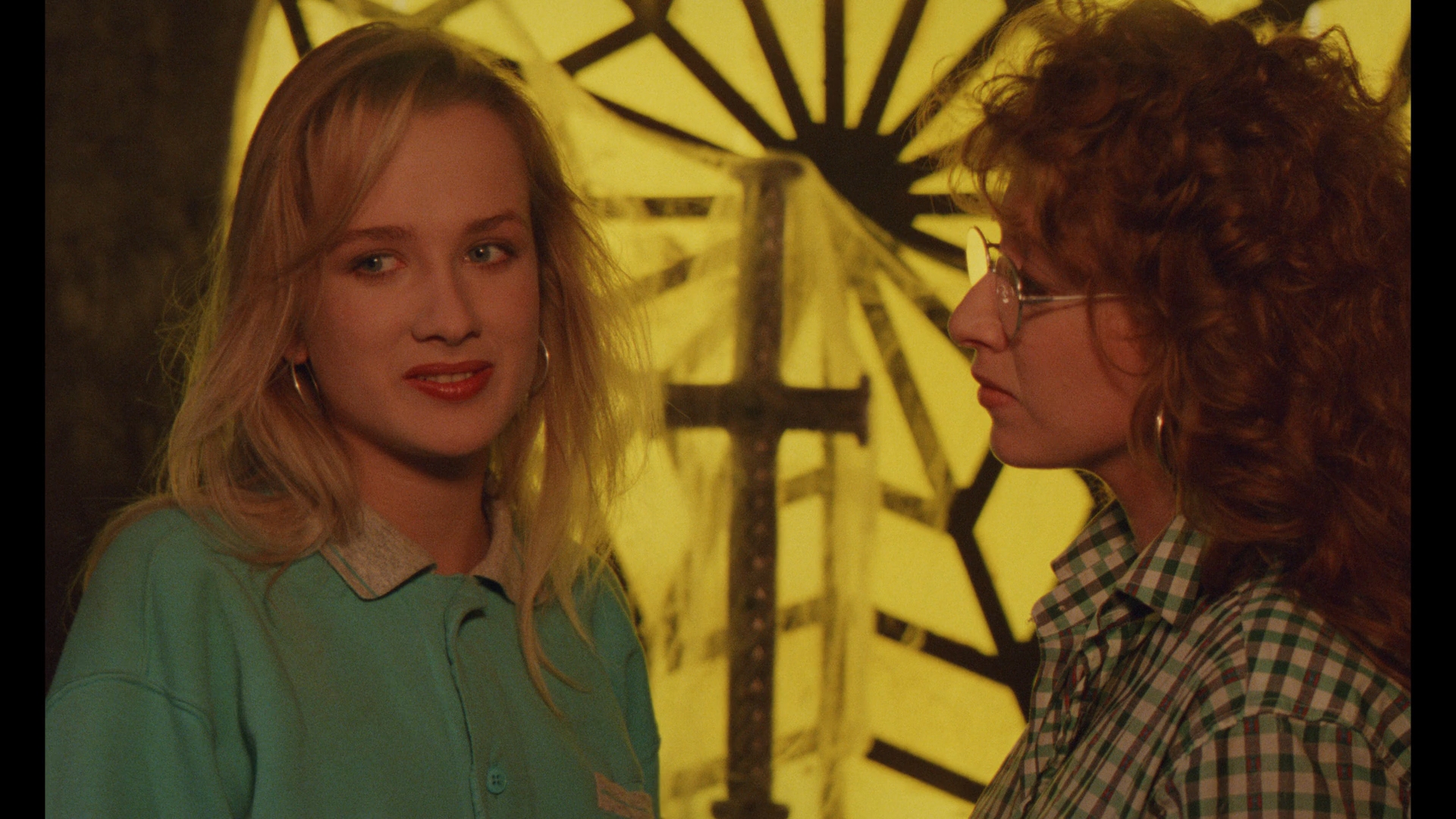 was essentially in a state of collapse, U.S. and U.K. audiences were suddenly embracing them like never before with flourishing coverage in magazines like Fangoria, Deep Red, and GoreZone. These films were being announced and reported on as if they were going to be gore-sprayed spectacles on the level of Demons, something they weren't even attempting; a similar fate was also befalling Fulci's output around this time with each new title trumpeted as a splattery return to form that simply couldn't be feasible. Seen on their own terms, the Brivido Giallo films are entertaining love letters to the horror genre with genuinely impressive production design and makeup effects, not to mention effective scores by Simon Boswell (Demons 2, Stagefright) to give it that warm, familiar atmosphere only that era could capture. All of the films were finally collected together in the U.S. for their Blu-ray debut from
was essentially in a state of collapse, U.S. and U.K. audiences were suddenly embracing them like never before with flourishing coverage in magazines like Fangoria, Deep Red, and GoreZone. These films were being announced and reported on as if they were going to be gore-sprayed spectacles on the level of Demons, something they weren't even attempting; a similar fate was also befalling Fulci's output around this time with each new title trumpeted as a splattery return to form that simply couldn't be feasible. Seen on their own terms, the Brivido Giallo films are entertaining love letters to the horror genre with genuinely impressive production design and makeup effects, not to mention effective scores by Simon Boswell (Demons 2, Stagefright) to give it that warm, familiar atmosphere only that era could capture. All of the films were finally collected together in the U.S. for their Blu-ray debut from 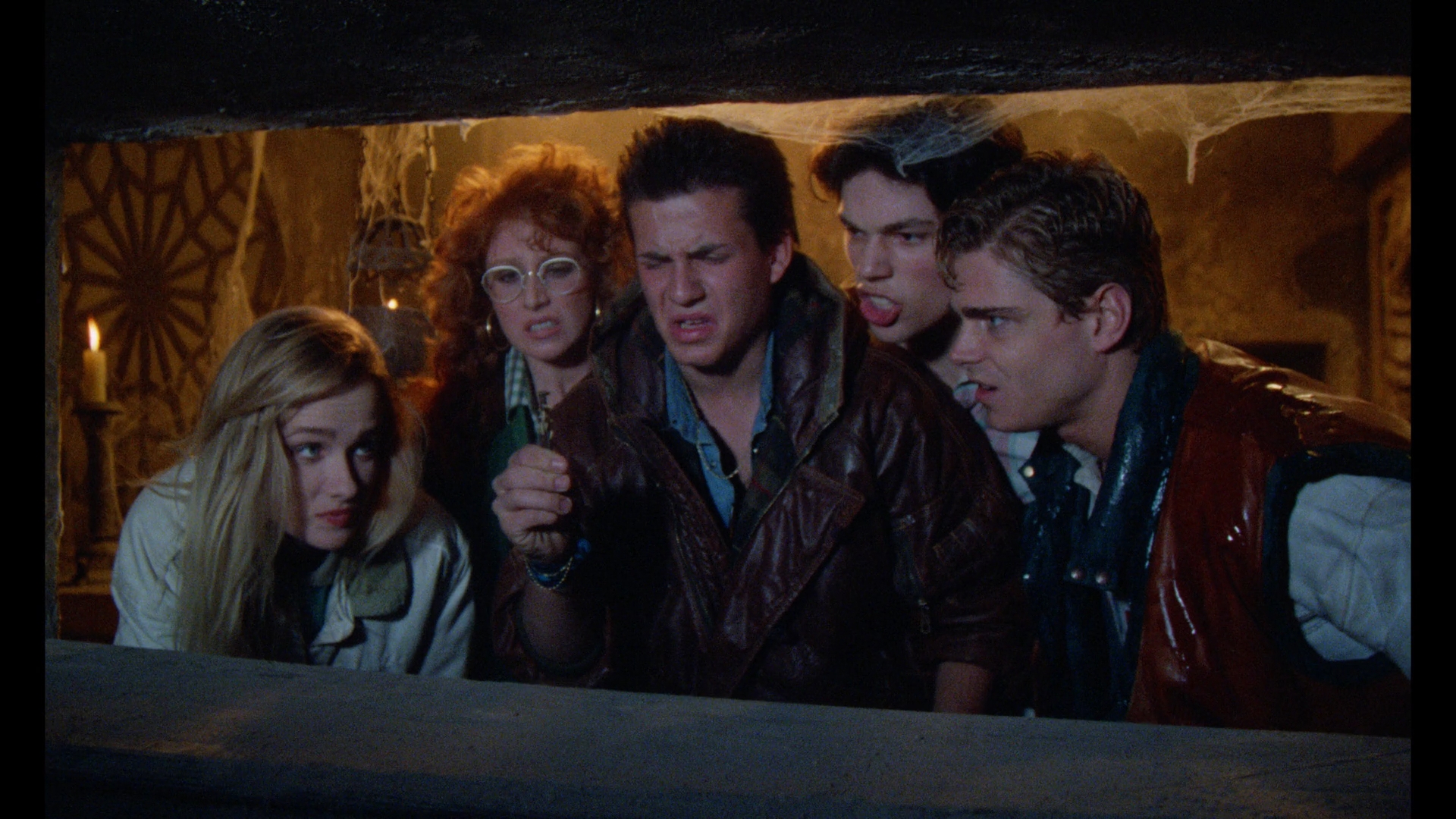 Cauldron Films as part of a nicely designed boxed set, limited to 2500 copies with each disc in its own case featuring a fold-out poster with nice artwork by Eric Adrian Lee.
Cauldron Films as part of a nicely designed boxed set, limited to 2500 copies with each disc in its own case featuring a fold-out poster with nice artwork by Eric Adrian Lee.
First out of the gate was the most misunderstood and divisive film of the series, Graveyard Disturbance, which injects a giddy pop culture attitude into the tried-and-true "kids spend a night in a spooky cemetery" tale. One of the first things we see is a van with Madonna's True Blue cover airbrushed on the side, which should tell you this isn't something to take all that seriously. After pulling off a goofball shoplifting stunt, five friends -- Robin (Thaddeus), Tina (Martino), Micky (Zombie 3's Ring), Gianni (Tognazzi), and David (Demons' Zinny) -- head out for a weekend getaway but end up getting stranded in thick fog. They decide to kill time in a nearby cemetery where they come upon a strange tavern run by Salamme (in disfigured makeup) from both Demons films. They end up accepting a running wager in this place that they can help themselves to a big jar full of gold treasure if they can spend a whole night in a subterranean crypt, which of course one of them accepts while pulling the others along. Of course, the night turns out to be a bit challenging as they're confronted by occasional groups of monsters (including a freaky bug banquet) and the threat of getting lost around every corner.
Sort of a comedy, Graveyard Disturbance aims for the same lightweight macabre air of a '60s throwaway like The 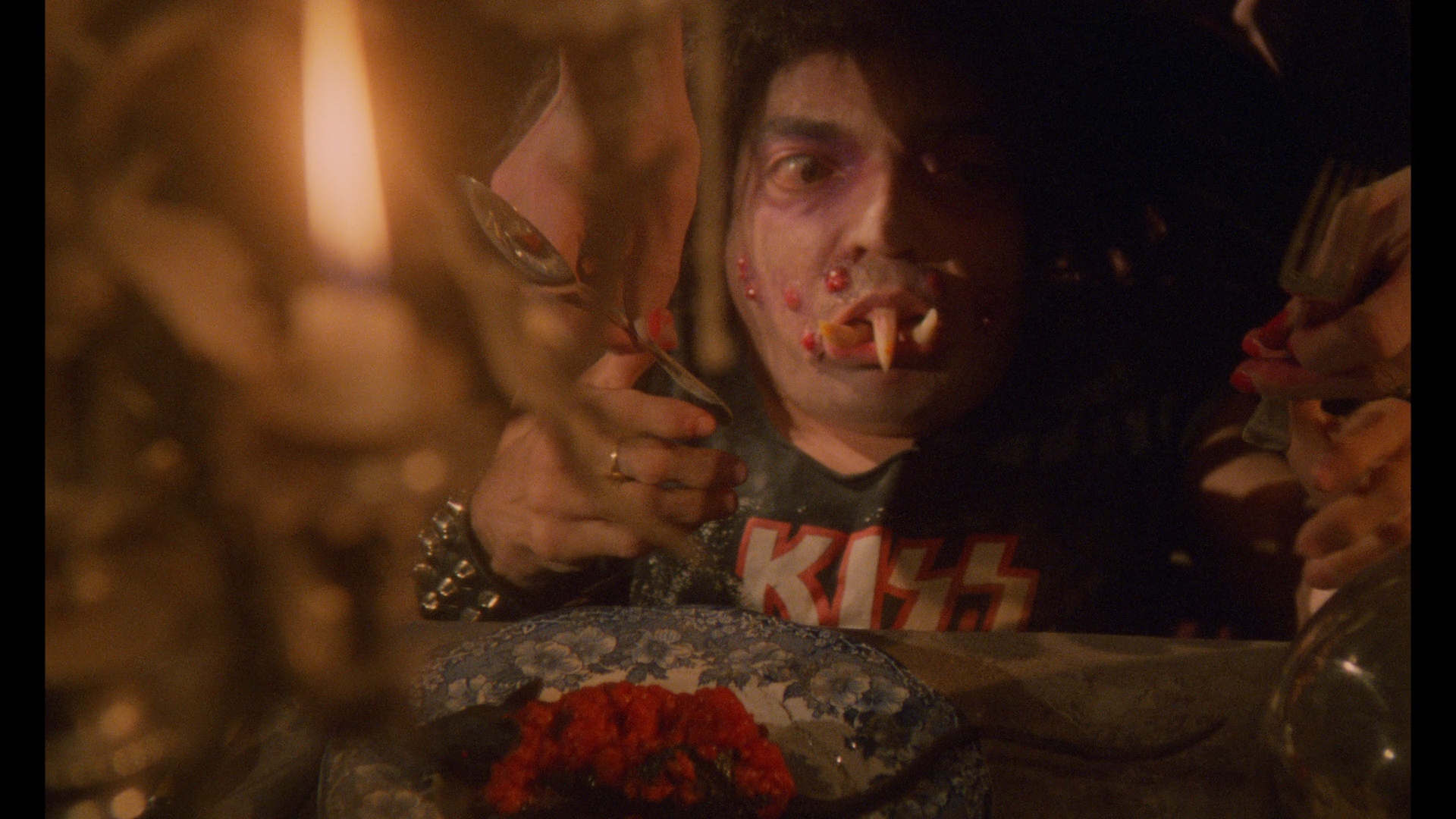 Headless Ghost -- and on that front it essentially delivers. The crypt itself looks great (something that was hard to appreciate thanks to decades of awful video transfers), the monster effects are sometimes quite effective, and all the wandering around through cobwebs and colorful lighting gives it a hangout vibe that clearly doesn't work for some. Like the remaining three films, this was shot entirely in English with the cast dubbed later to sound American; in this case the English track works just fine and fits a little more than the clunkier dubbing of the Italian track. The film was issued on VHS and then on DVD including a so-so U.S. one from the dubious Mya Communications in 2009, but the Blu-ray blows that out of the water with a pristine 2K restoration that reveals layers of detail in the sets
Headless Ghost -- and on that front it essentially delivers. The crypt itself looks great (something that was hard to appreciate thanks to decades of awful video transfers), the monster effects are sometimes quite effective, and all the wandering around through cobwebs and colorful lighting gives it a hangout vibe that clearly doesn't work for some. Like the remaining three films, this was shot entirely in English with the cast dubbed later to sound American; in this case the English track works just fine and fits a little more than the clunkier dubbing of the Italian track. The film was issued on VHS and then on DVD including a so-so U.S. one from the dubious Mya Communications in 2009, but the Blu-ray blows that out of the water with a pristine 2K restoration that reveals layers of detail in the sets 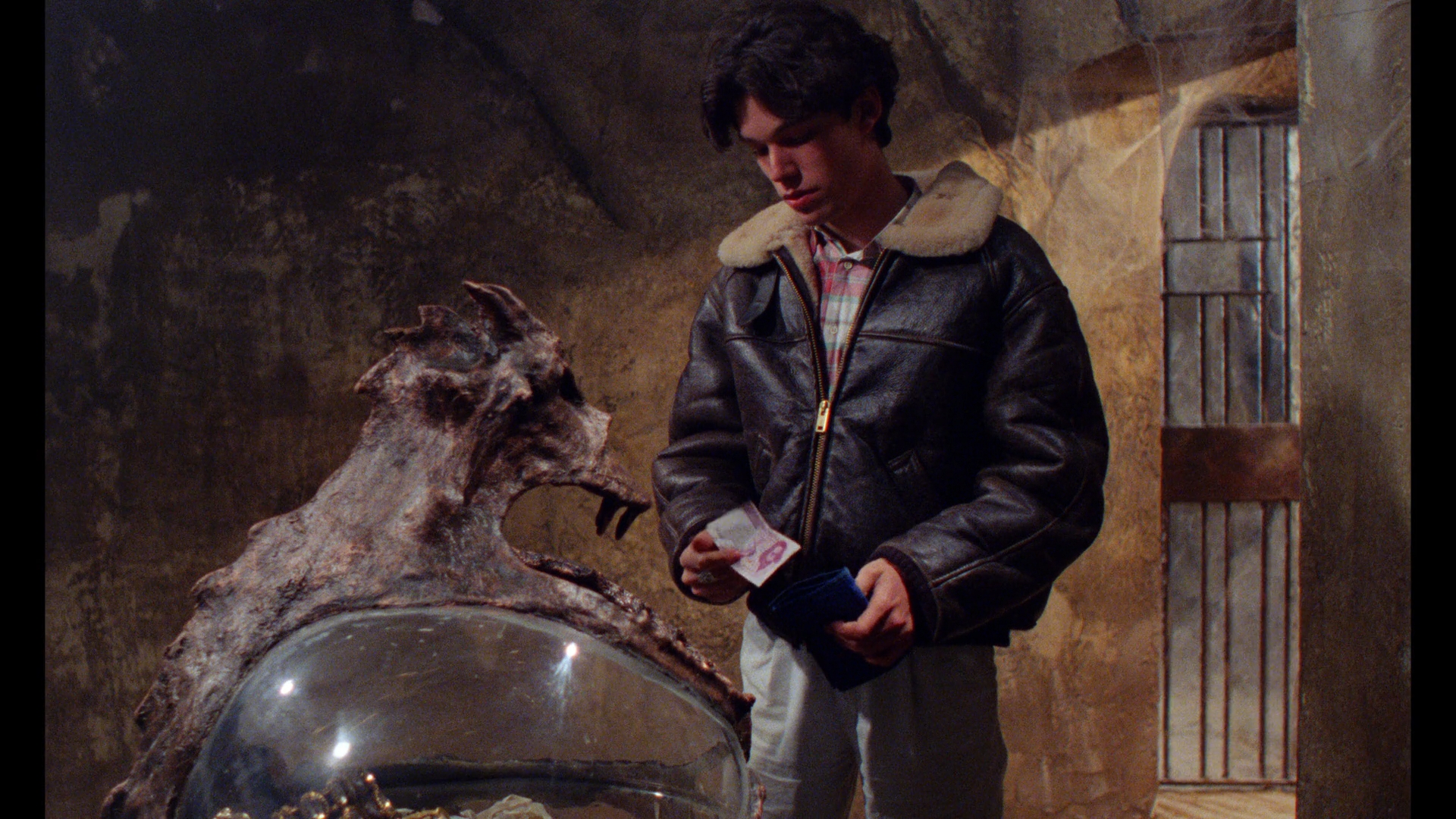 that make this a far more entertaining watch. It really looks sumptuous now and shows off Bava's visual skills enough that even haters might find this worth another look. The DTS-HD MA 2.0 mono English and Italian tracks are included (as with the other three films) with optional English SDH or English-translated subtitles. One interesting wrinkle here is that the English version feels pretty wholesome script-wise, while the Italian dialogue is way more profane and would easily get this slapped with an R rating. A new audio commentary by Eugenio Ercolani (who also created all of the new video bonus features) and Nanni Cobretti is both a solid intro to the nuts and bolts of this series and the state of Bava's career while also working as an overview of the Italian film industry in general in the later stretch of the '80s as things transitioned past the point of no return in movie theaters.
that make this a far more entertaining watch. It really looks sumptuous now and shows off Bava's visual skills enough that even haters might find this worth another look. The DTS-HD MA 2.0 mono English and Italian tracks are included (as with the other three films) with optional English SDH or English-translated subtitles. One interesting wrinkle here is that the English version feels pretty wholesome script-wise, while the Italian dialogue is way more profane and would easily get this slapped with an R rating. A new audio commentary by Eugenio Ercolani (who also created all of the new video bonus features) and Nanni Cobretti is both a solid intro to the nuts and bolts of this series and the state of Bava's career while also working as an overview of the Italian film industry in general in the later stretch of the '80s as things transitioned past the point of no return in movie theaters.
In "Disturbing Lighting" (16m9s), cinematographer Gianlorenzo Battaglia starts off doing chair exercises and then shares extensive memories of Luciano Martino and wife Edwige Fenech, producer Mino Loy, Bava, the creation of atmosphere here on the set, the one actor who "played around too much," and a few other films he counts among his favorite work. In "Whatever Happened to Baby Zinny?" (10m45s), Karl Zinny looks back at his discovery by Bava for Demons thanks to a commercial, their subsequent movies together including Delirium, the contrast between Bava and Dario Argento, the experience of acting when you're immersed in tons of special effects, and his eventual transition from acting to music. Bava himself turns up in "Graveyard Stories" (12m5s) talking about his affection for this batch of films, the casting process, the light tone he was going for here, his tendency to help the children of famous people based on personal experience, the planning used to reuse the sets in various capacities on the later films, and his thoughts on his TV output in general. In "Building a Graveyard" (10m36s), the omnipresent Massimo Antonello Geleng appears to talk about his production design work on this film (arguably the biggest star of the whole thing) which benefited from careful planning overall given how complex the crypt design was. And yes, he talks about creating that incredible van at the beginning. Finally in "The Giallo Gang" (10m46s), special effects artist Roberto Ricci chats about the glory days of working on real film, treating his work around this time as one long movie he did in various locations, the contrasting personalities on the set, and the crazy "sub-aqueous dog" he still remembers from this time. The original English trailer is also included in a fresh, beautiful new scan (which also goes for the other three films here). Also included with the disc is a bonus soundtrack CD; incredibly, Boswell's work actually got a vinyl release in 1988, and the composer later made it available as a 24-bit digital download. Anyone who's seen these films knows they're peppered with a few tracks from his Demons 2 score, but the bulk of it is original and a lot of fun. The CD here actually isn't the same, sharing about half of its tracks with the LP version while adding 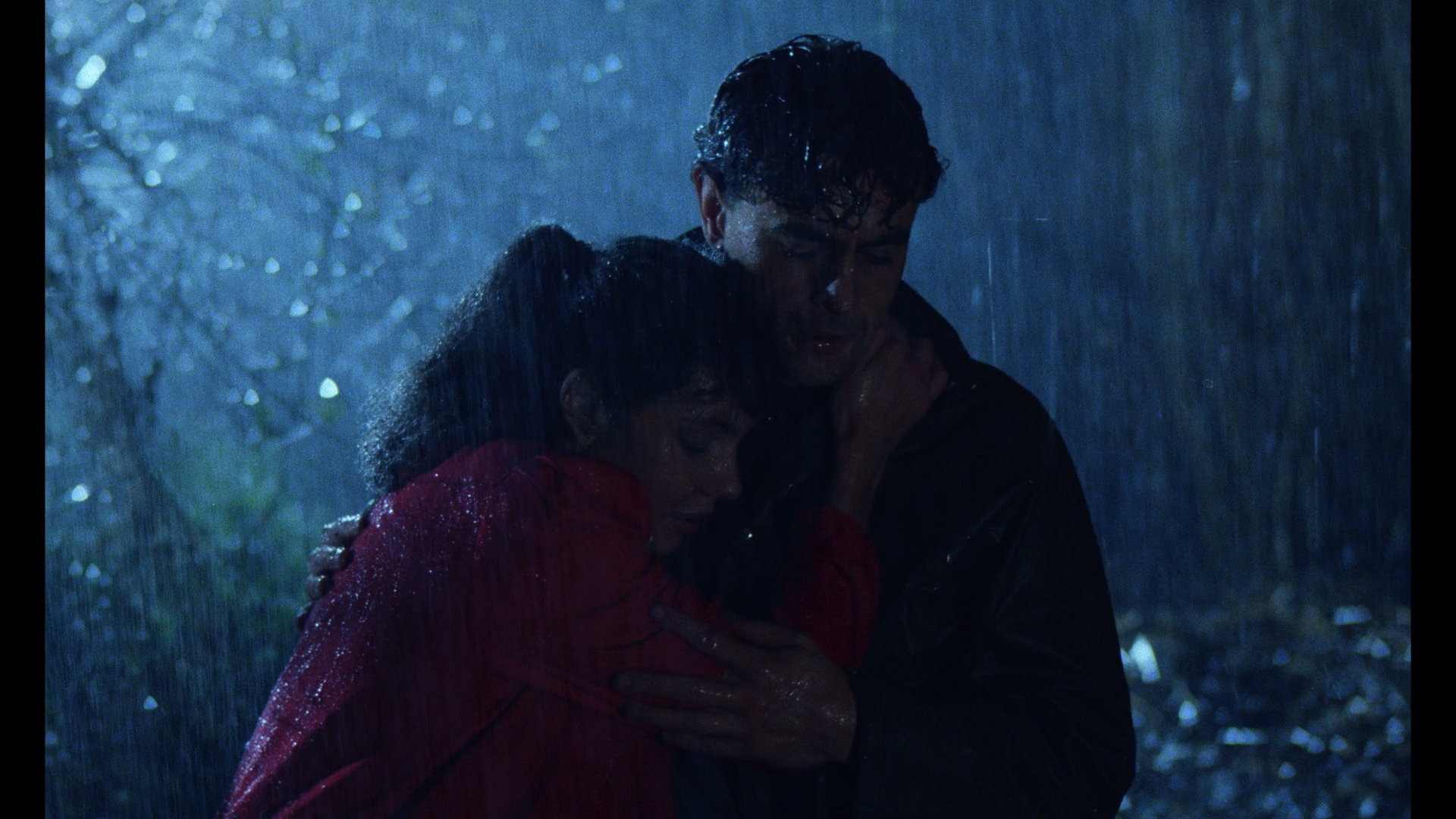 several new cues here from The Ogre and Dinner with a
several new cues here from The Ogre and Dinner with a 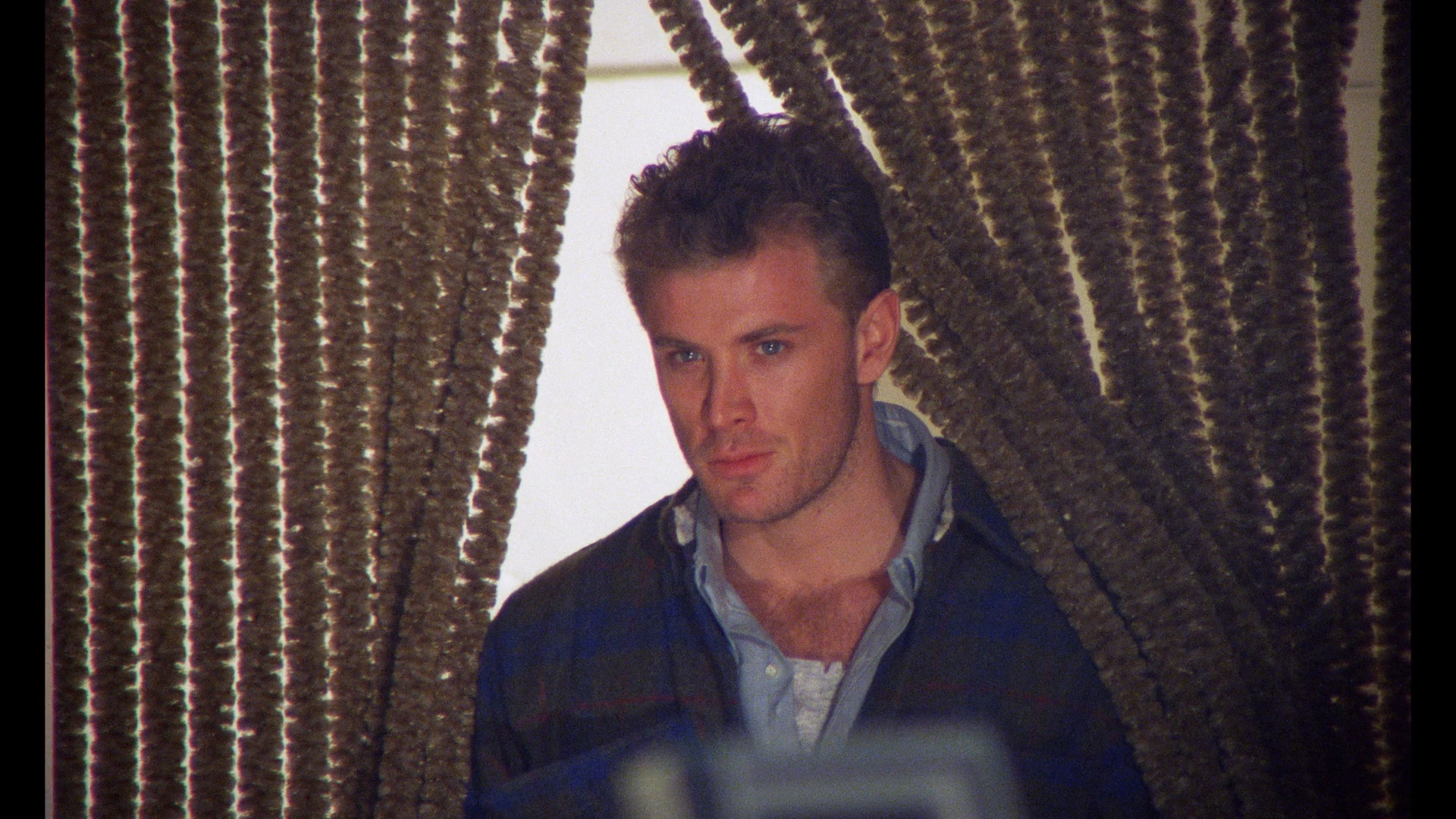 Vampire.
Vampire.
Disc two is devoted to the usual choice for the best film of the cycle, Until Death, often described by its creators as a supernatural riff on The Postman Always Rings Twice. That's sort of accurate as it does revolve around a casual dining establishment connected to a husband murdered by an adulterous duo, but it also shares quite a bit of DNA with High Plains Drifter and especially Mario Bava's Shock (which Lamberto worked on as co-director) right down to its in-camera jump scares and the idea of a dead husband coming back for his little son who's fixated with a swing. The story starts off running as Linda (Raiders of Atlantis' Scola) and her lover, Carlo (Stagefright's Brandon), have just murdered her husband, Luca (Pendicini) and are transporting his body in a van to bury him during a violent thunderstorm. However, he turns out to be slightly alive, prodding Carlo to brain him with a rock. Six years later, Linda has given birth to Luca's son, Alex (future Marvel voice dubber Vivio), and is constantly fending off the lecherous customers at the diner and small hotel she now runs with Carlo. She claims Luca took off and has sent only one postcard since, a cover story that seems to be more or less sticking. One night, wandering hitchhiker Marco (Demons' Barberini) shows up to stay a while in tandem with some very intense nightmares Alex is having every night about his father coming back from the grave. Marco seems to know quite a bit about the couple's past, antagonizing the increasingly paranoid and violent Carlo 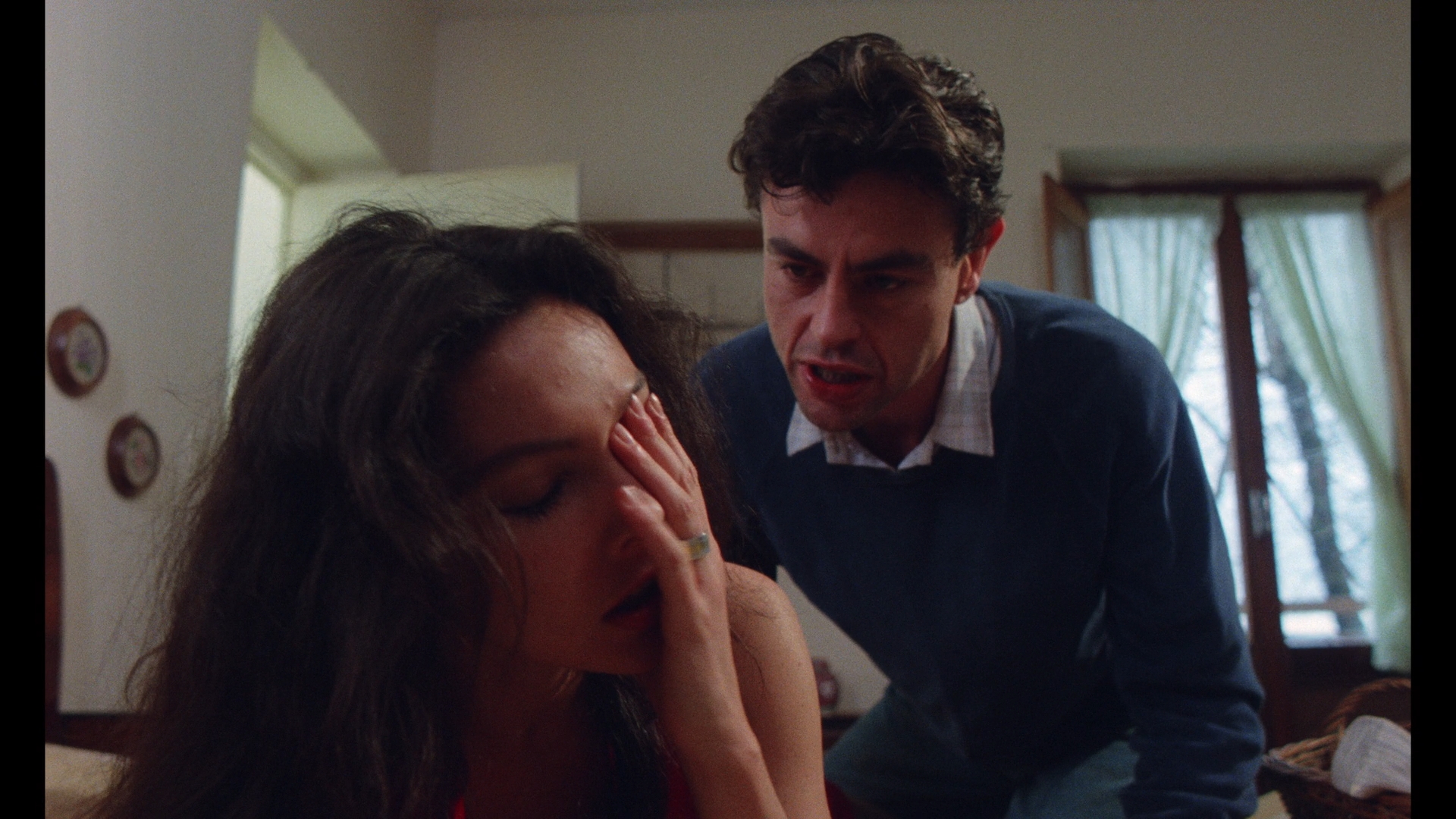 and increasing Linda's sense of
and increasing Linda's sense of 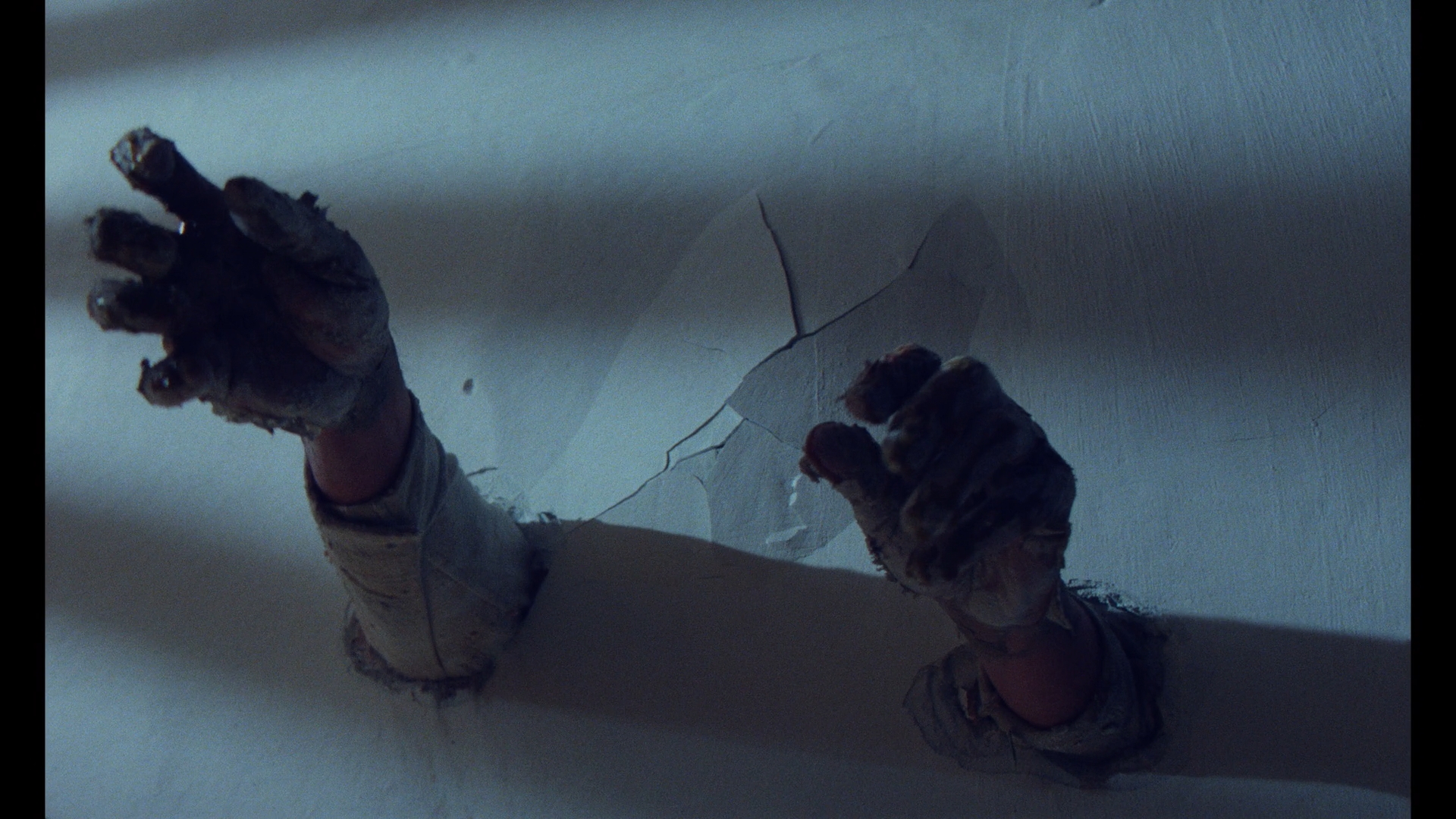 guilt.
guilt.
Even by '80s Italian horror standards, Until Death has virtually no internal logic about its supernatural elements (including a last second ending that dodges what should have been a much darker and more poetic one) and wears its influences very obviously on its sleeve. Fortunately Bava pulls out all the stops in terms of mood and style here to compensate, with the damp atmosphere and frequently spooky imagery really getting under your skin in a few spots. That includes a simple but extremely powerful makeup effect on Barberini during the climax, while Alex's nightmare sequences have some eerie moments as well like a screaming Luca slowly bursting through a bedroom wall. The gore level here is extremely low, but there is one assault scene that's quite strong for television and enough stabbing and trauma to make an impression. Boswell's score here is probably the strongest of the series including a main theme (called "Hitch" on the LP release) with some nice Goblin-esque flair.
Until Death did the same rounds on home video as its predecessor (for some reason as The Changeling 2, briefly) including a Mya DVD, but the Cauldron disc is a huge improvement with the correct day-for-night color timing and far 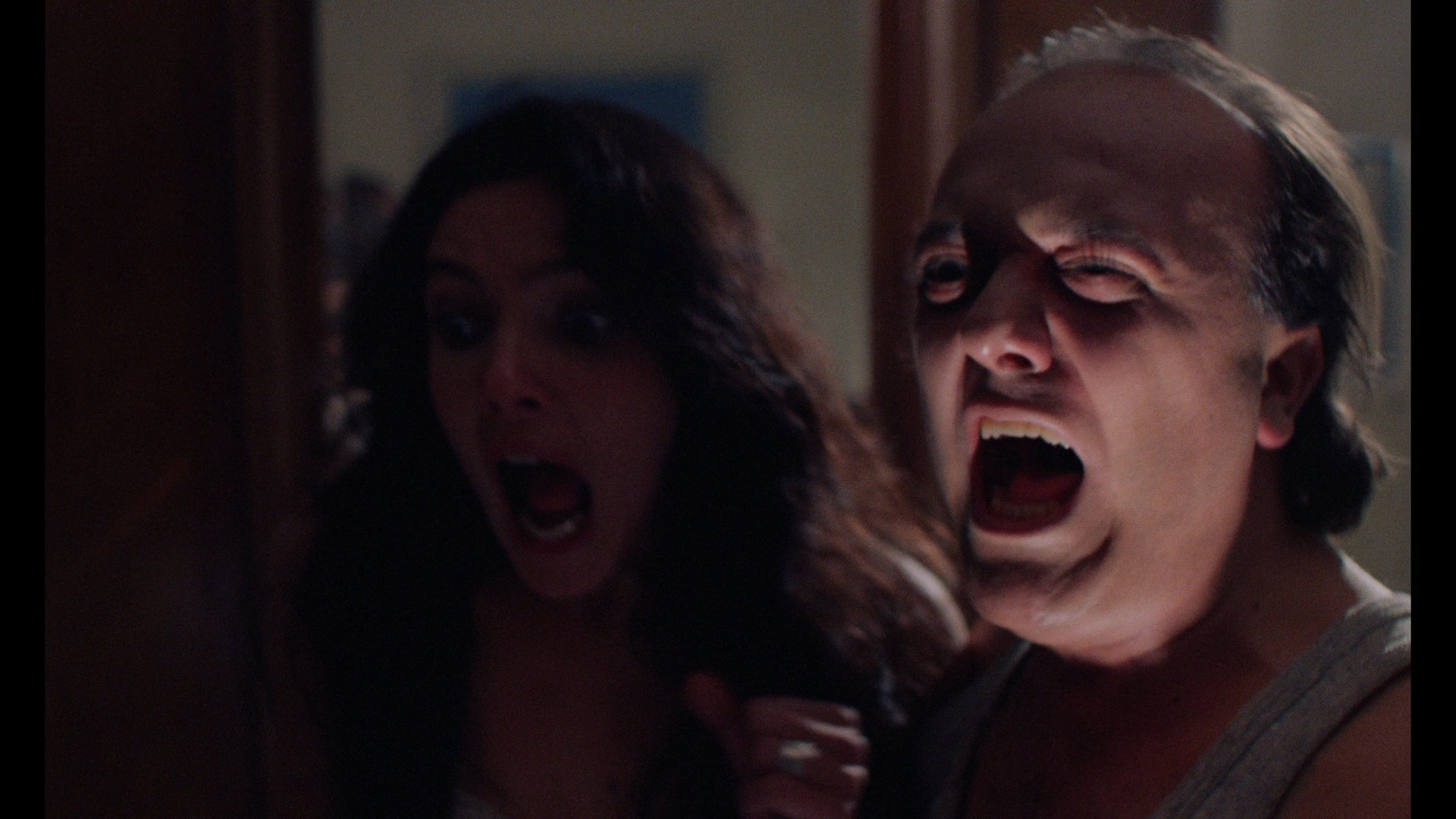 better detail. This is the one film in the set where the Italian track comes out as the clear winner, sounding much punchier and more layered than the English one including extensive sound effects and ambiance only in the Italian version.
better detail. This is the one film in the set where the Italian track comes out as the clear winner, sounding much punchier and more layered than the English one including extensive sound effects and ambiance only in the Italian version. 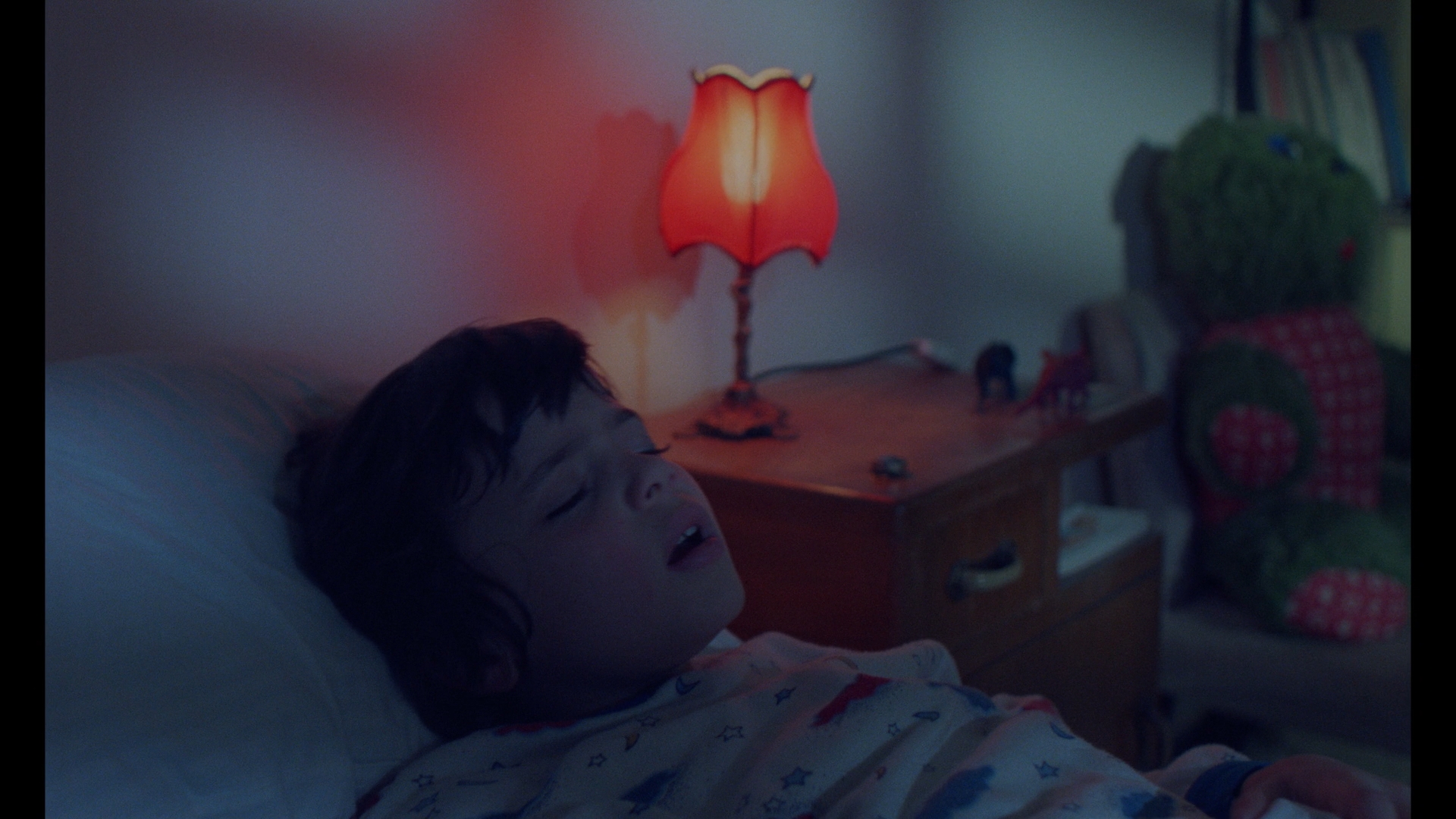 By comparison the English track sounds flat and lifeless, with Brandon's distinctive real voice replaced here to the track's detriment. A new commentary by Ercolani and Troy Howarth covers all the essential bases for the film putting it in context within the larger series, tying together echoes of Bava and other genre films and novels, the Boswell-Bava partnership, the logistics of putting the films together (and why some of them didn't see the light of a TV screen until 1989), and the uneasy relationship between TV and cinemas moving into the '90s. In "The Achievements of a Good Baddie" (23m34s), Brandon chats in alternating English and subtitled Italian about his longtime friendship and collaborations with Bava, memories of the lake shooting location, his rapport with his fellow actors including playing backgammon regularly with Barberini, his career-making work with Lindsay Kemp, and his approach to playing genre films and villains in particular. Bava appears in "Deadly Love Triangle" (15m16s) elaborating on the speedy jump into this film right after the first installment and the process of choosing the Sacchetti script, which was famously a source of contention with Lucio Fulci. He also explains how some of the more inventive shock effects were achieved in single takes, as well as praise for the effective special effects. In "The Eye of the Bavas" (10m45s), Battaglia returns for more detail about his work with Bava and prior films with Pupi Avati, the luxury of doing 35mm TV productions compared to the usual 16mm, the effect of working with at the atmospheric location, and the experimental effects he used in some shots including some Vittorio Storaro-style color filters. Finally in "A Lake to Die For" (18m17s), Geleng recalls this being the simplest of the four as far as his job went while also detailing his art background in more detail
By comparison the English track sounds flat and lifeless, with Brandon's distinctive real voice replaced here to the track's detriment. A new commentary by Ercolani and Troy Howarth covers all the essential bases for the film putting it in context within the larger series, tying together echoes of Bava and other genre films and novels, the Boswell-Bava partnership, the logistics of putting the films together (and why some of them didn't see the light of a TV screen until 1989), and the uneasy relationship between TV and cinemas moving into the '90s. In "The Achievements of a Good Baddie" (23m34s), Brandon chats in alternating English and subtitled Italian about his longtime friendship and collaborations with Bava, memories of the lake shooting location, his rapport with his fellow actors including playing backgammon regularly with Barberini, his career-making work with Lindsay Kemp, and his approach to playing genre films and villains in particular. Bava appears in "Deadly Love Triangle" (15m16s) elaborating on the speedy jump into this film right after the first installment and the process of choosing the Sacchetti script, which was famously a source of contention with Lucio Fulci. He also explains how some of the more inventive shock effects were achieved in single takes, as well as praise for the effective special effects. In "The Eye of the Bavas" (10m45s), Battaglia returns for more detail about his work with Bava and prior films with Pupi Avati, the luxury of doing 35mm TV productions compared to the usual 16mm, the effect of working with at the atmospheric location, and the experimental effects he used in some shots including some Vittorio Storaro-style color filters. Finally in "A Lake to Die For" (18m17s), Geleng recalls this being the simplest of the four as far as his job went while also detailing his art background in more detail 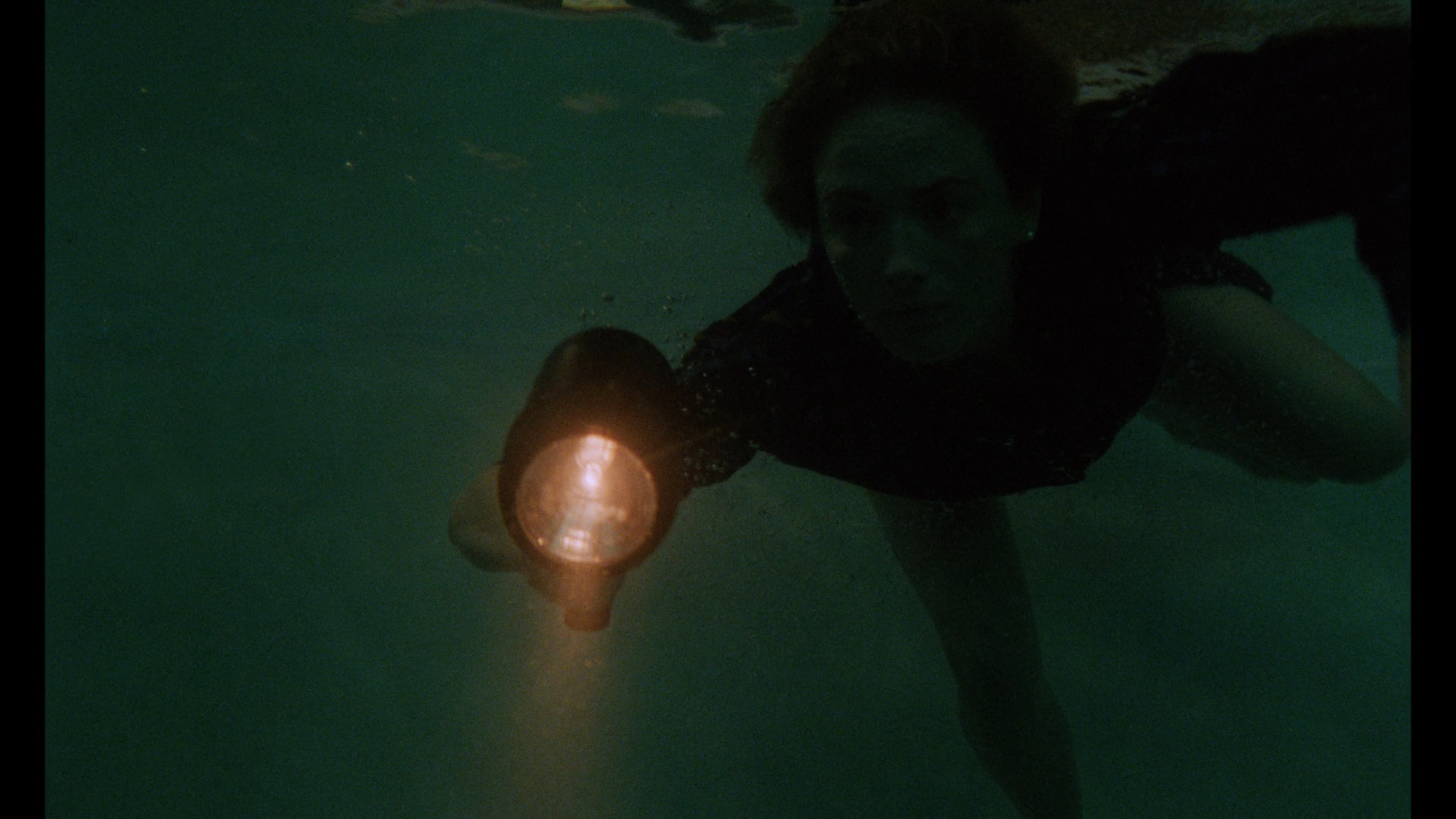 and explaining how he got into the
and explaining how he got into the 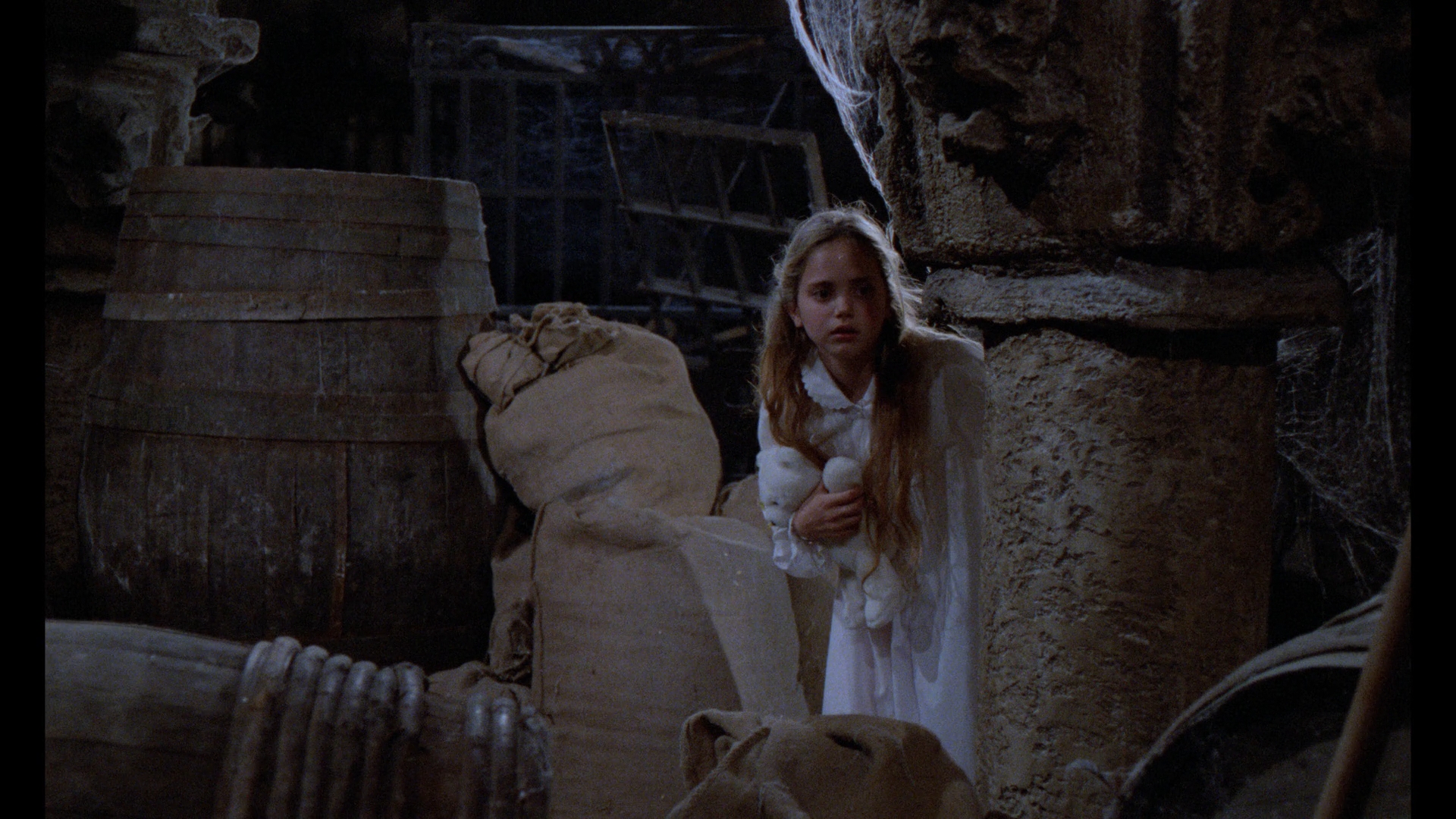 business.
business.
On disc three we reach the film that got the most horror press coverage back in the day and the one with the most infamous retitling: The Ogre, sold in some territories and even released on U.S. DVD from Shriek Show as Demons III: The Ogre. That title really didn't do it any favors at all as this is very much a retro Gothic monster movie and probably the closest Bava ever got to making a Full Moon film. Here Virginia Bryant, a scene stealer as the elevator-confined escort in Demons 2, headlines as Cheryl, an Oregonian horror author who once suffered from terrifying nightmares about a monster stalking her as a little girl in a spooky castle. Now married to Tom (House by the Cemetery's Malco) and with a young son, Bobby (Vinci), in tow, she heads to a villa to write her next book while her family cavorts around the countryside nearby. Her explorations lead her to some peculiar discoveries that inspire her next book, A Drawer Full of Teeth, which gets off to an ominous start when a beetle falls into her typewriter. Getting a babysitter in town doesn't help much either as Cheryl's nightmares return full force, and she realizes the property might have something to do with her childhood trauma and something nasty lurking downstairs.
Once again it's important to emphasize that this is a made-for-TV film so the gore content here is extremely low, though you do get more nudity than expected including a bubble bath encounter for our married couple. Again the cinematography and production design do the heavy lifting here with some truly gorgeous macabre visuals throughout (the stretching painting bit is a keeper), and Bava even drops in an homage to the underwater scene from Inferno at one point to make you feel warm and fuzzy. The film doesn't make much use of its titular monster, but the monster design is fun enough when it shows up and implies some nasty aspects of its background that are worth picking apart once the film is over. Again Boswell 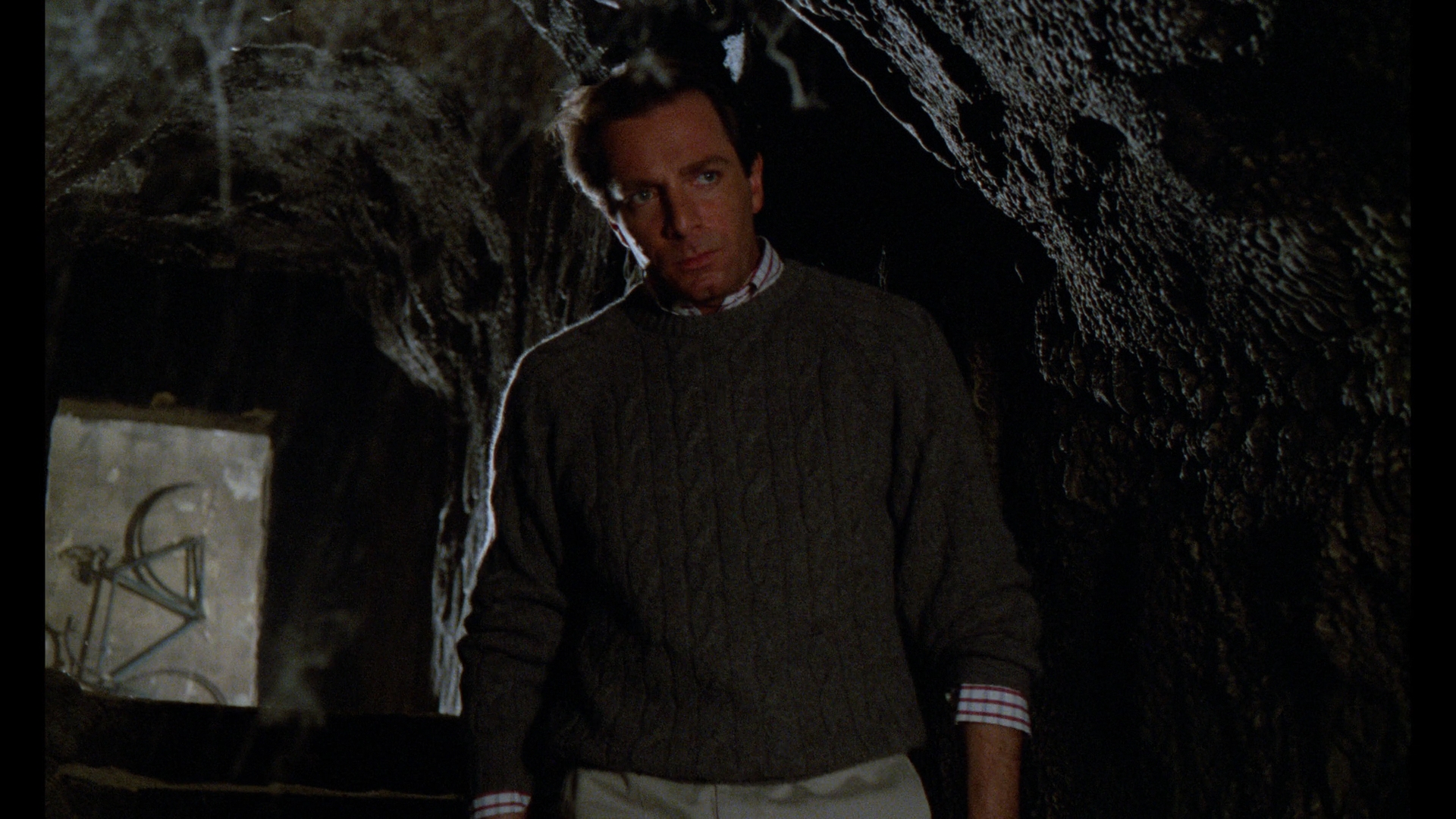 does fine work on the score, including
does fine work on the score, including 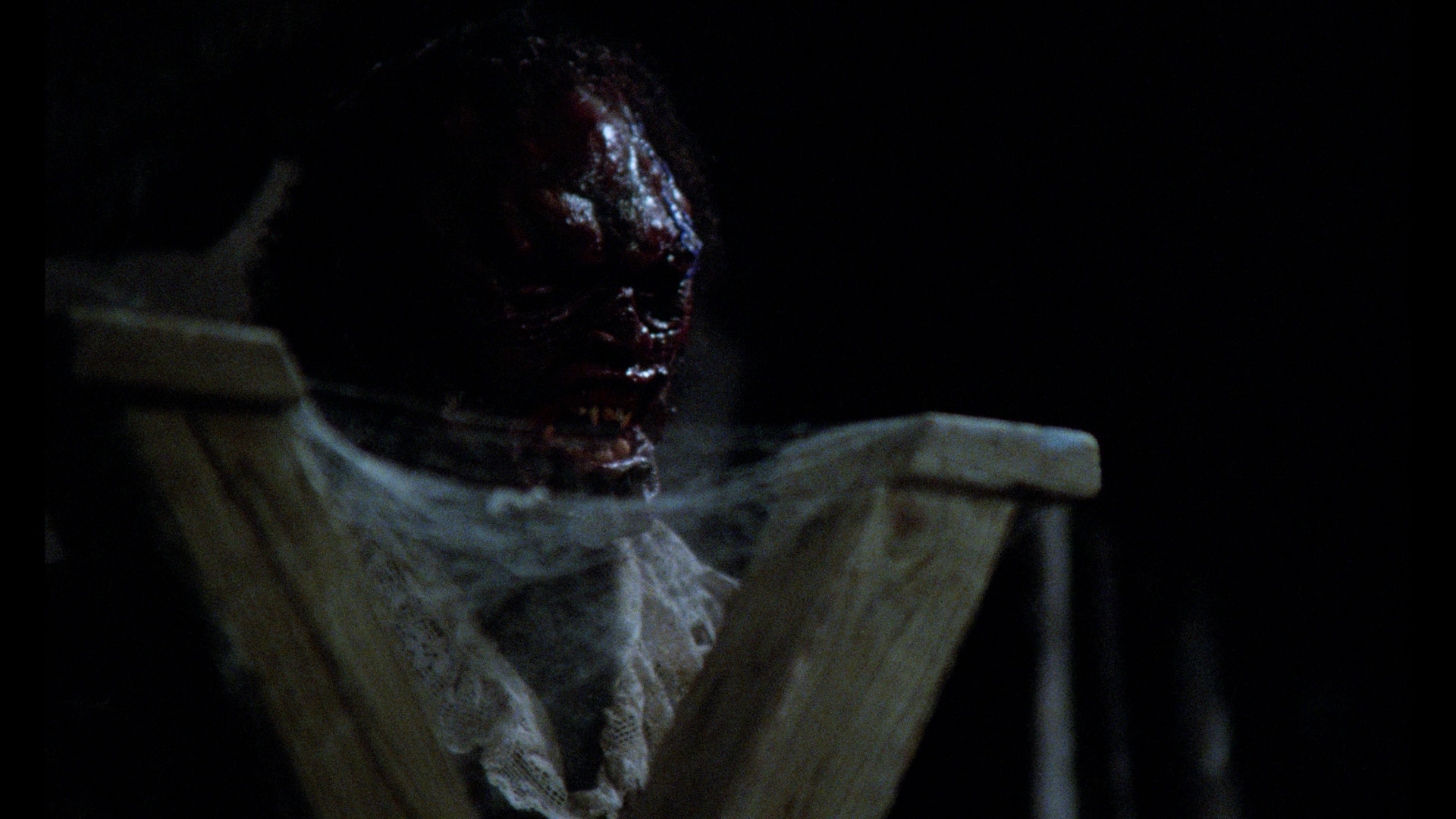 a memorable main theme.
a memorable main theme.
For some reason this film fared far worse than its peers on home video with truly awful transfers for decades; the U.S. DVD was easily the worst of the bunch with a cropped, interlaced 1.78:1 presentation with a heavy yellow tint that made it very difficult to appreciate. The new transfer on the Blu-ray is a massive leap forward in every way, restoring the original compositions and imbuing the film with much more mood and texture than before which should hopefully help its reputation improve a bit. Of the English and Italian tracks here, it's a bit of a draw with the English probably inching ahead thanks to matching the original performances. A skillful new audio commentary by Rachel Nisbet is a solid companion to the film as she covers the similarities to Sacchetti's early House by the Cemetery, the finer nuances of the lighting and location choices, the handling of its central writer character, the prominence of the color green, and the connections to other films about childhood nightmares impacting the present. In "Master of Ogres" (13m26s), Bava talks about the distinction between "omnivore" directors and those dedicated to the genre, his collaborators on this film, Bryant's extreme dedication to her role that almost got her hurt, the necessity of finding Italian actors who could speak English for these films, and the presence of his son Roy Bava as an assistant director on the set. In "The Ogre's Lair" (10m48s), Geleng returns to delve into the way scripts "find me," the role that main set worked as a starting point here, and the Arsoli castle used for exteriors (versus the cabin from the original script). Finally in "Homemade Shivers" (15m48s), Ricci goes more into his background and covers some of his other work for Bava and Sergio Martino before going into his favorite moments from this film (including the obligatory maggots) and some of his tricks of the trade. Also ported over here from the earlier DVD is its 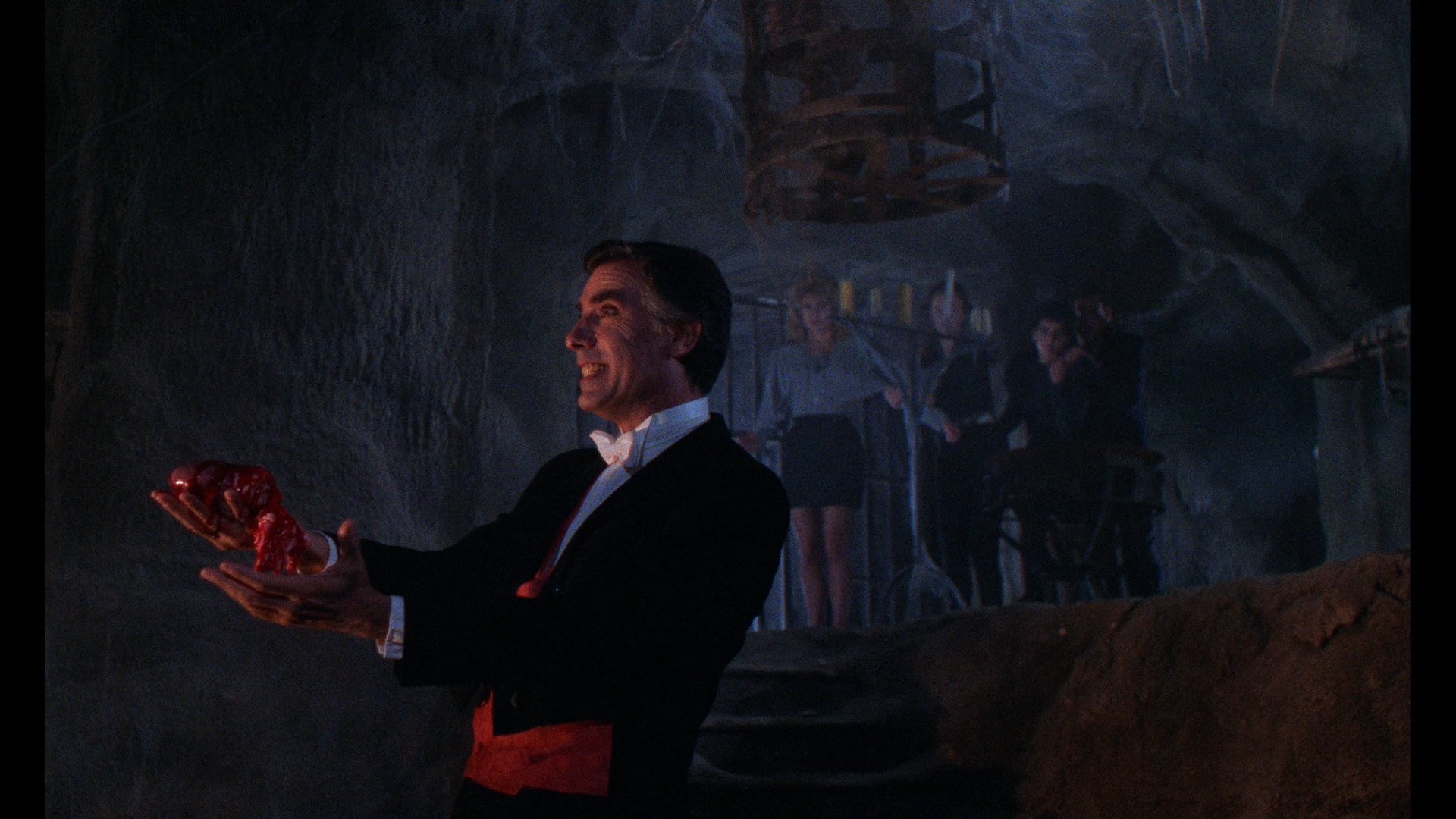 one substantial extra, a 10m40s Bava interview about the film's TV origins and the story behind the series in
one substantial extra, a 10m40s Bava interview about the film's TV origins and the story behind the series in 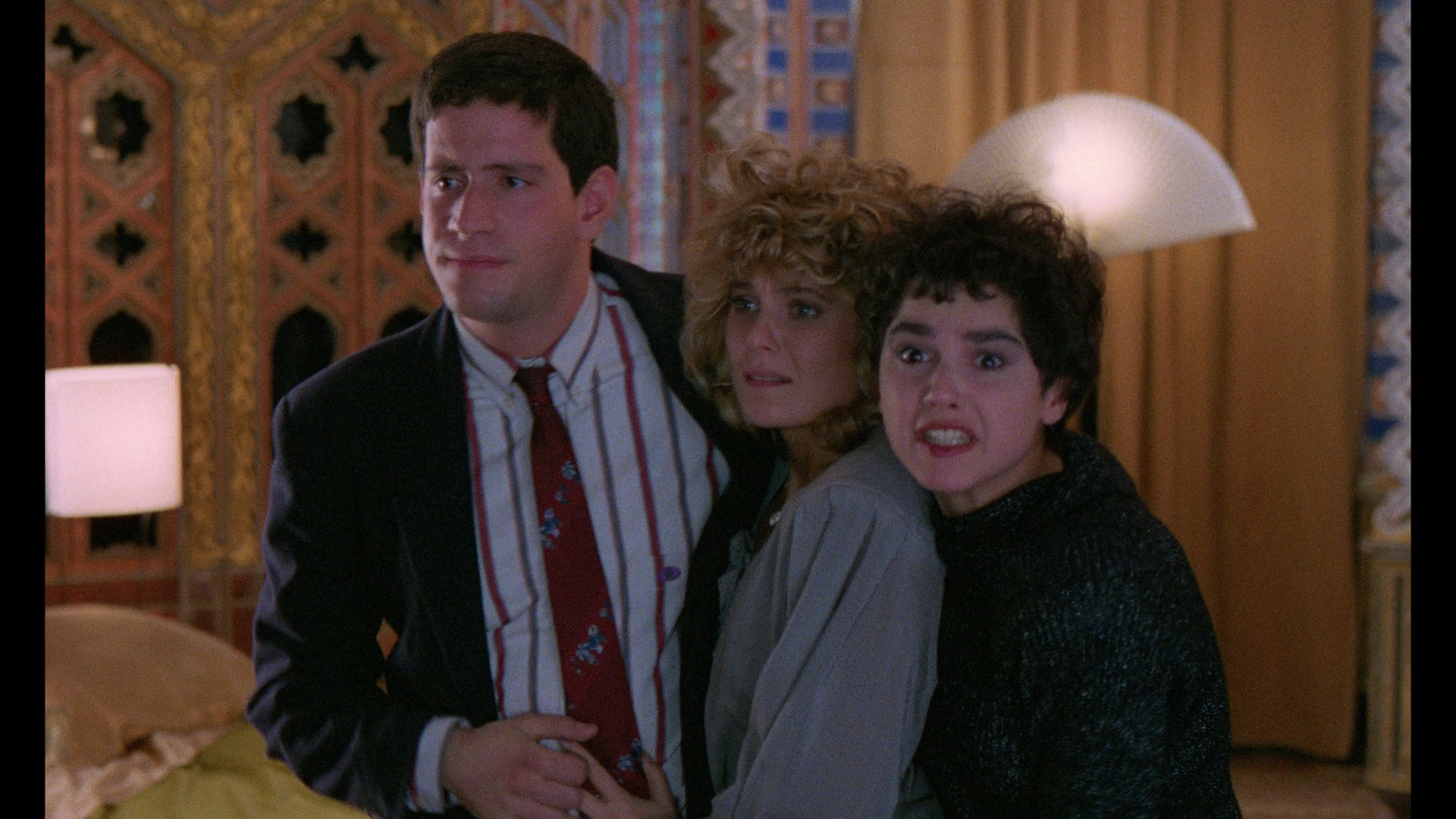 general.
general.
Finally on the fourth Blu-ray we get to the other "light" entry in the series, Dinner with a Vampire, which wildly overachieves its goals thanks to a clearly enthusiastic lead turn by giallo legend George Hilton and some of the most gorgeous sets of Bava's entire career. The action starts decades ago as a horror film crew uses a pickax to smash open an underground wall for their film shoot, unleashing a long-trapped vampire in the process. Flash forward to the present day where, in a world populated by vapid industry types and music video shoots, said vampire took a shine to the business and is now respected horror filmmaker Jurek (Hilton). Now he's recruiting a cast for his newest film with an invitation to come visit his place to get ready, so Gianni (Rossi), dancer Monica (Sciò), singer Rita (Pellegrino, who shows off one of her real pop songs here), and Sasha (Milillio) embark on a night they think will be their big break. Instead after seeing a film of Jurek showing off his real-life antics, they find out over dinner that the bloodsucker is tired of living and wants them to exterminate him before dawn. However, his inner vampire side still has a sense of self-preservation and isn't ready to go so readily, while Jurek's staff have their own motivations as well.
Though played a bit broadly at times, Dinner with a Vampire embraces the material with so much energy that it emerged as a dark horse favorite among some viewers. Much of the credit has to go to Hilton, who easily outshines anyone else in the cast and gets to show far more range here than most of his '70s output ever allowed. It's a shame there wasn't a fifth film in the series as all the behind-the-scenes personnel had really perfected the look and feel here 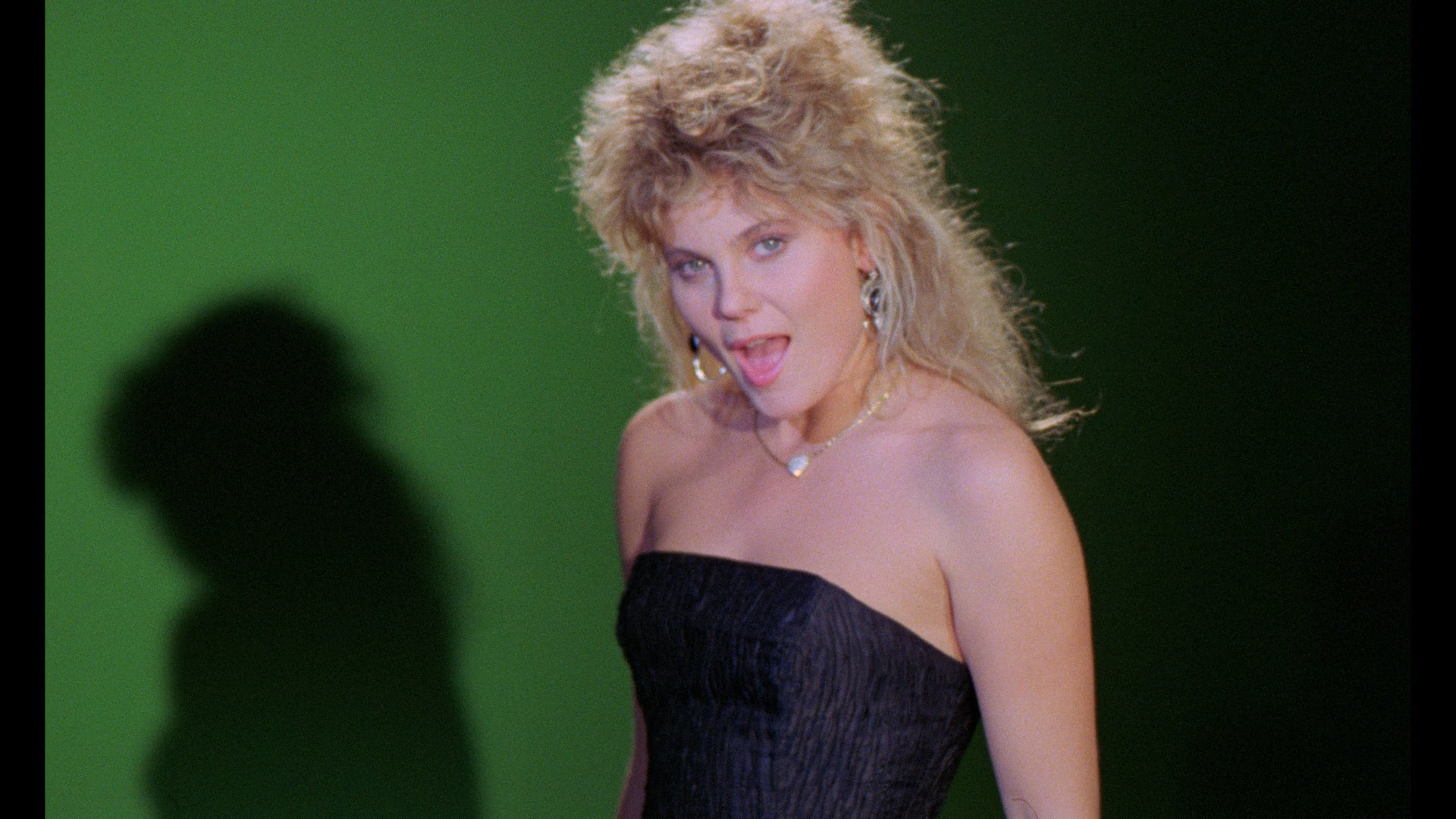 with the sets, lighting, and music
with the sets, lighting, and music 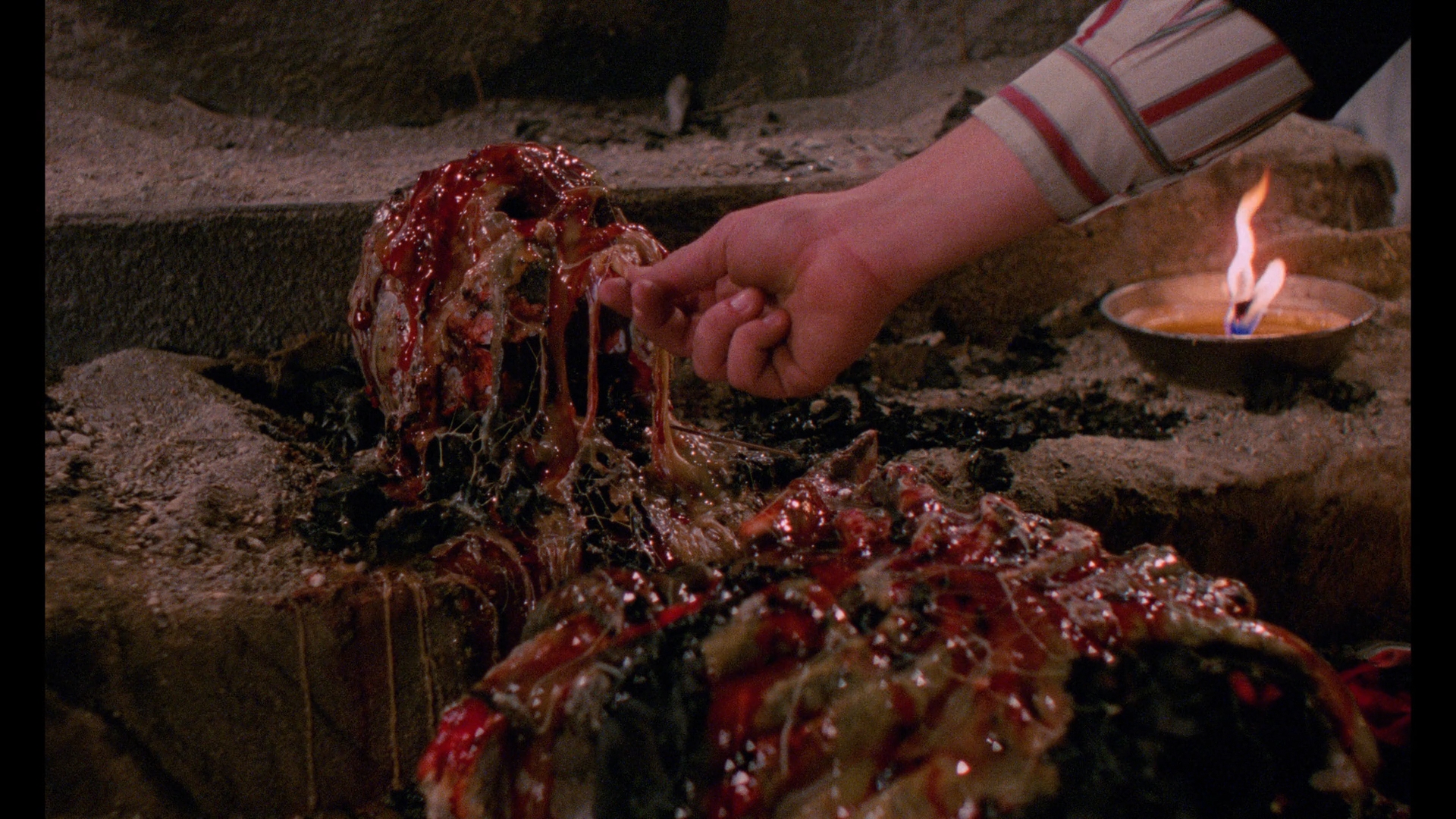 working harmoniously to create a giddy eerie atmosphere without spending much money, and there are some nice nods to the various formats of home entertainment including a great VHS gag and a major plot point involving celluloid itself. This one has really looked the best over the years on home video with the Mya DVD actually offering a good representation of the intended look apart from missing the day-for-night tints in some outdoor shots. That's corrected on the Cauldron Blu-ray (see below), which looks excellent and shows off the little background details with nice clarity throughout. Again it's pretty much a draw between the English and Italian tracks here, though the latter does add a lot of off-screen dialogue that makes it interesting to compare. This time commentary duties are handled by this writer with Howarth and Eroclani, so no evaluation here but hopefully you'll find it worth a listen. The last Bava interview here, "A Vampire Called Television" (13m28s), is an overview of how he and his father approached working in TV, the format's encroaching erosion of the theatrical audience in the '80s, the status of this one as his favorite of the four, and his great pleasure with the casting choices. Boswell himself turns up for a new interview here (13m55s) about his history with Bava including the confidence he felt after his first full score with Demons 2, the opportunity of playing in a lot of moods with these films, the process of creating his music outside of Italy, and the approaches he took for the musical style of each film from the castanet grooves of Dinner to the "carpet" ambiance of The Ogre. The final Geleng interview, "Dracula's Decorator" (15m48s), covers the process of selling films with memorable monsters long before they're actually shot, the role of poster artists, the use of proportion in coming up with monster designs, the discovery of the Florence hotel that serves as the primary location here, and a really hilarious bit where he reveals the cast member he secretly dated after this for a while (but completely blanks on her name). Finally "The Career of a Uruguayan Vampire" (20m34s) uses audio of a Hilton interview to cover the trajectory of his entire professional experience from his first part through his auditioning for Lucio Fulci to his favorite highlights from the westerns, comedies, and thrillers he made over the years. The set also comes with an insert illustrated booklet featuring an overview essay by Ercolani laying out the essentials of the series' origins, its place in the evolution of Italian TV, and its significance in Bava's career.
working harmoniously to create a giddy eerie atmosphere without spending much money, and there are some nice nods to the various formats of home entertainment including a great VHS gag and a major plot point involving celluloid itself. This one has really looked the best over the years on home video with the Mya DVD actually offering a good representation of the intended look apart from missing the day-for-night tints in some outdoor shots. That's corrected on the Cauldron Blu-ray (see below), which looks excellent and shows off the little background details with nice clarity throughout. Again it's pretty much a draw between the English and Italian tracks here, though the latter does add a lot of off-screen dialogue that makes it interesting to compare. This time commentary duties are handled by this writer with Howarth and Eroclani, so no evaluation here but hopefully you'll find it worth a listen. The last Bava interview here, "A Vampire Called Television" (13m28s), is an overview of how he and his father approached working in TV, the format's encroaching erosion of the theatrical audience in the '80s, the status of this one as his favorite of the four, and his great pleasure with the casting choices. Boswell himself turns up for a new interview here (13m55s) about his history with Bava including the confidence he felt after his first full score with Demons 2, the opportunity of playing in a lot of moods with these films, the process of creating his music outside of Italy, and the approaches he took for the musical style of each film from the castanet grooves of Dinner to the "carpet" ambiance of The Ogre. The final Geleng interview, "Dracula's Decorator" (15m48s), covers the process of selling films with memorable monsters long before they're actually shot, the role of poster artists, the use of proportion in coming up with monster designs, the discovery of the Florence hotel that serves as the primary location here, and a really hilarious bit where he reveals the cast member he secretly dated after this for a while (but completely blanks on her name). Finally "The Career of a Uruguayan Vampire" (20m34s) uses audio of a Hilton interview to cover the trajectory of his entire professional experience from his first part through his auditioning for Lucio Fulci to his favorite highlights from the westerns, comedies, and thrillers he made over the years. The set also comes with an insert illustrated booklet featuring an overview essay by Ercolani laying out the essentials of the series' origins, its place in the evolution of Italian TV, and its significance in Bava's career.
THE OGRE: Cauldron Blu-ray
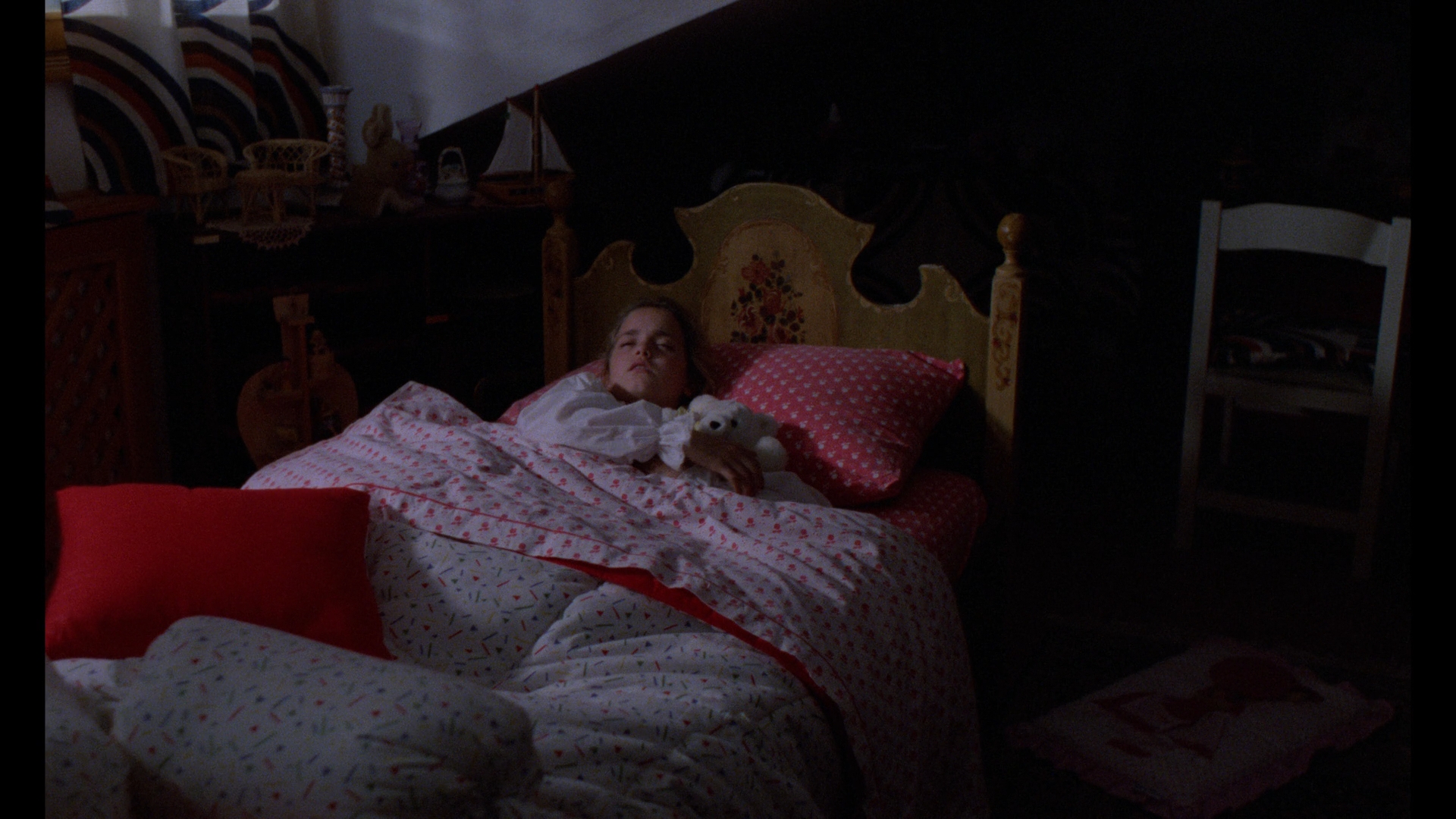
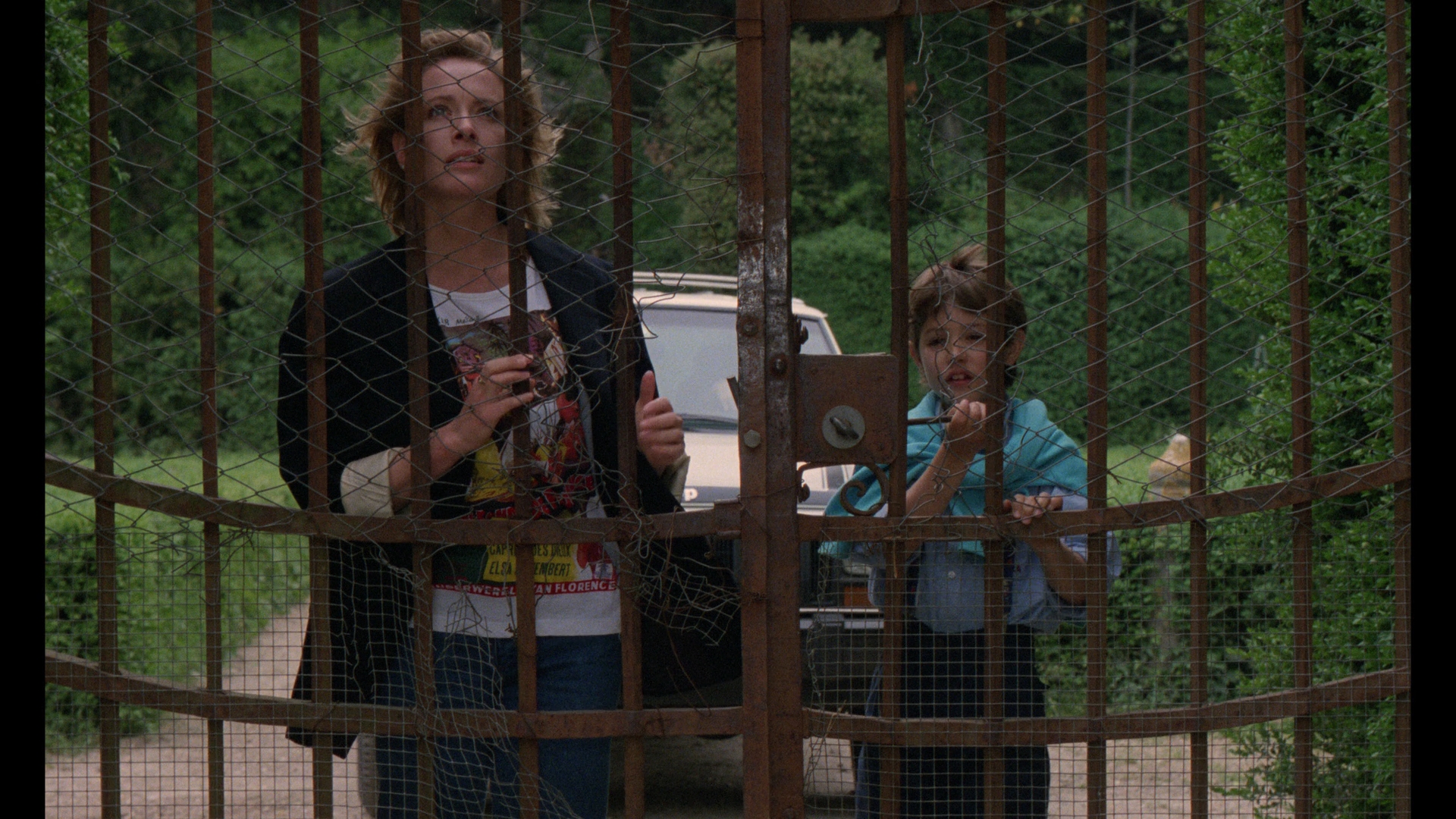
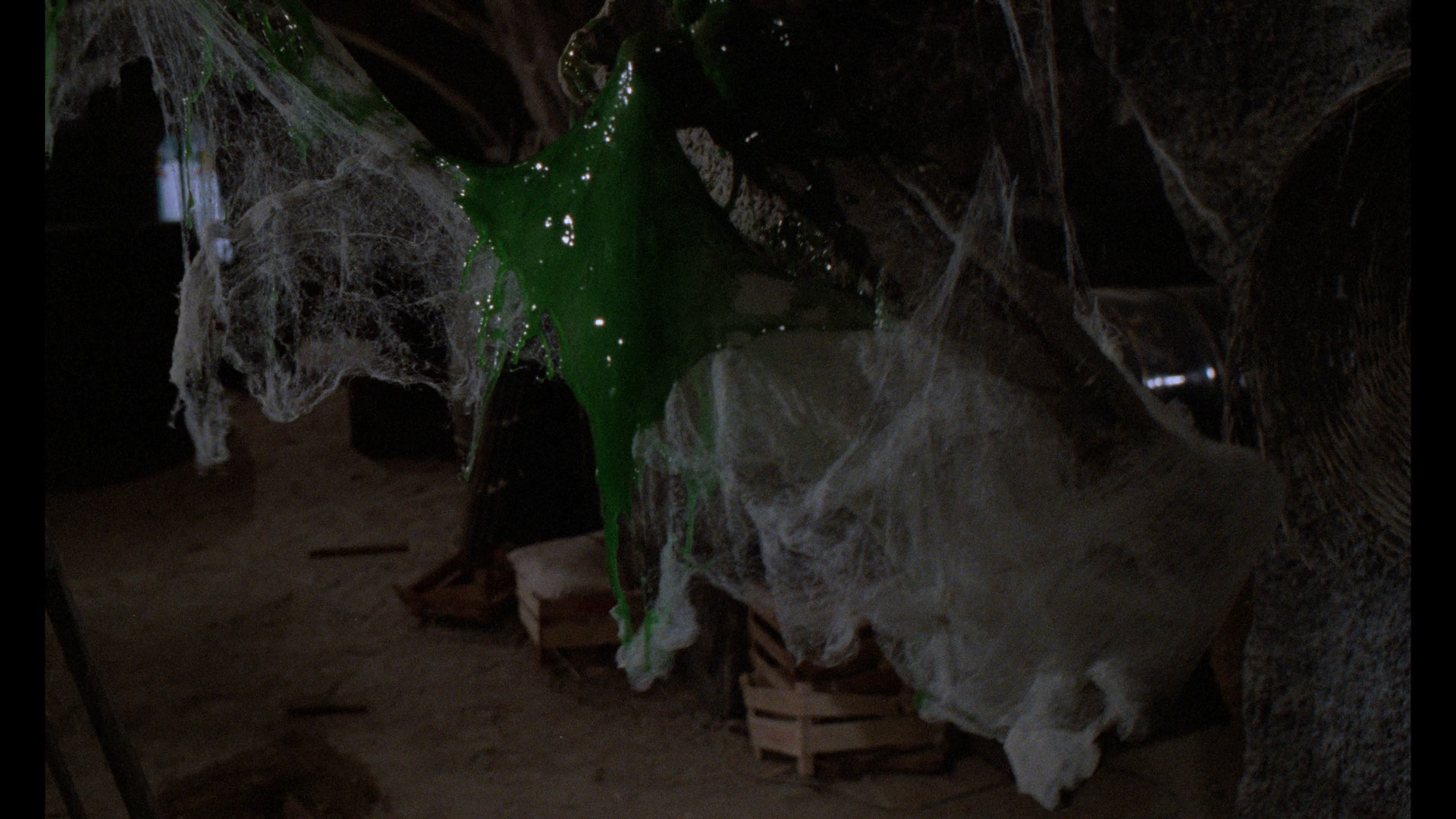
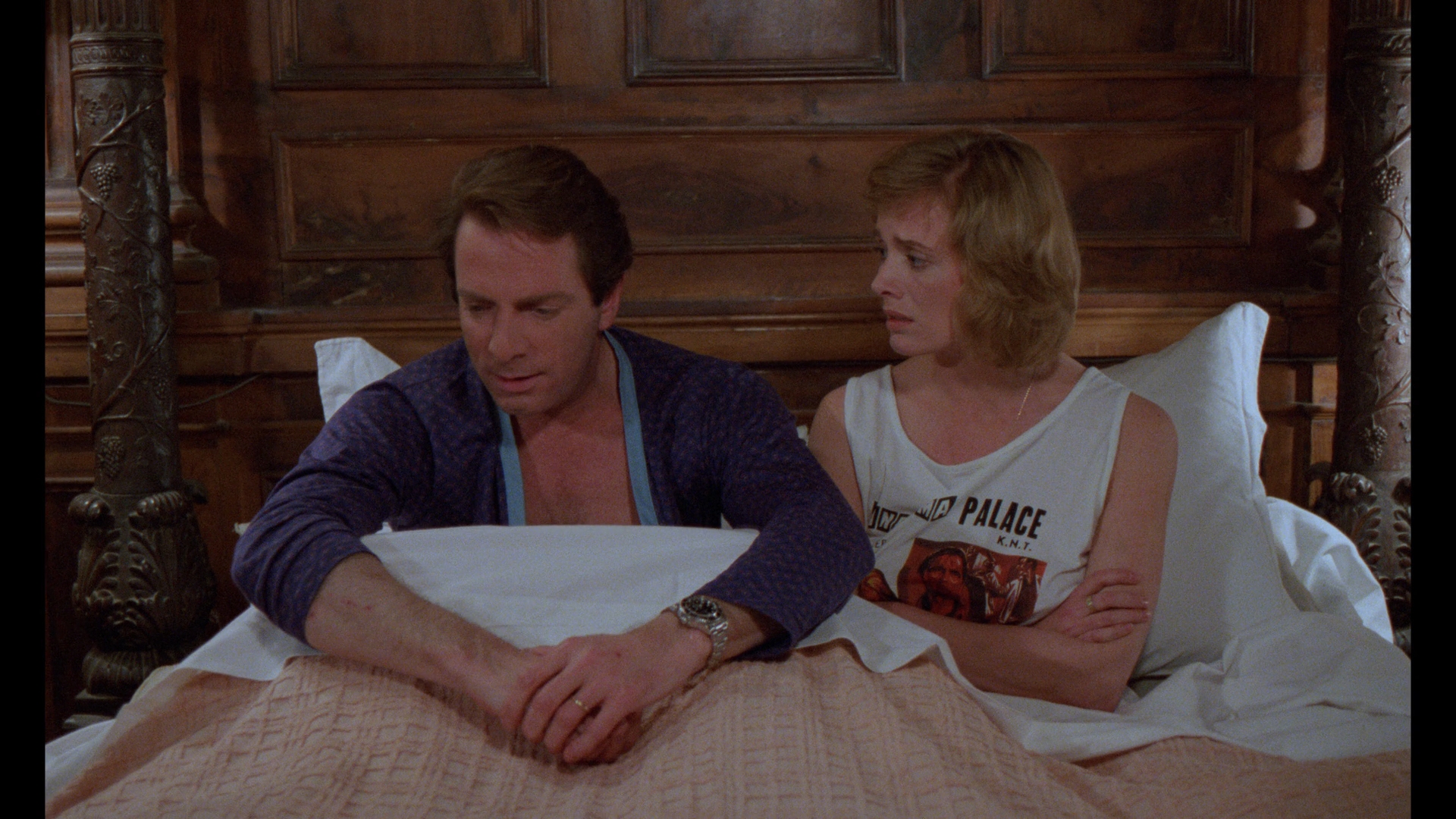
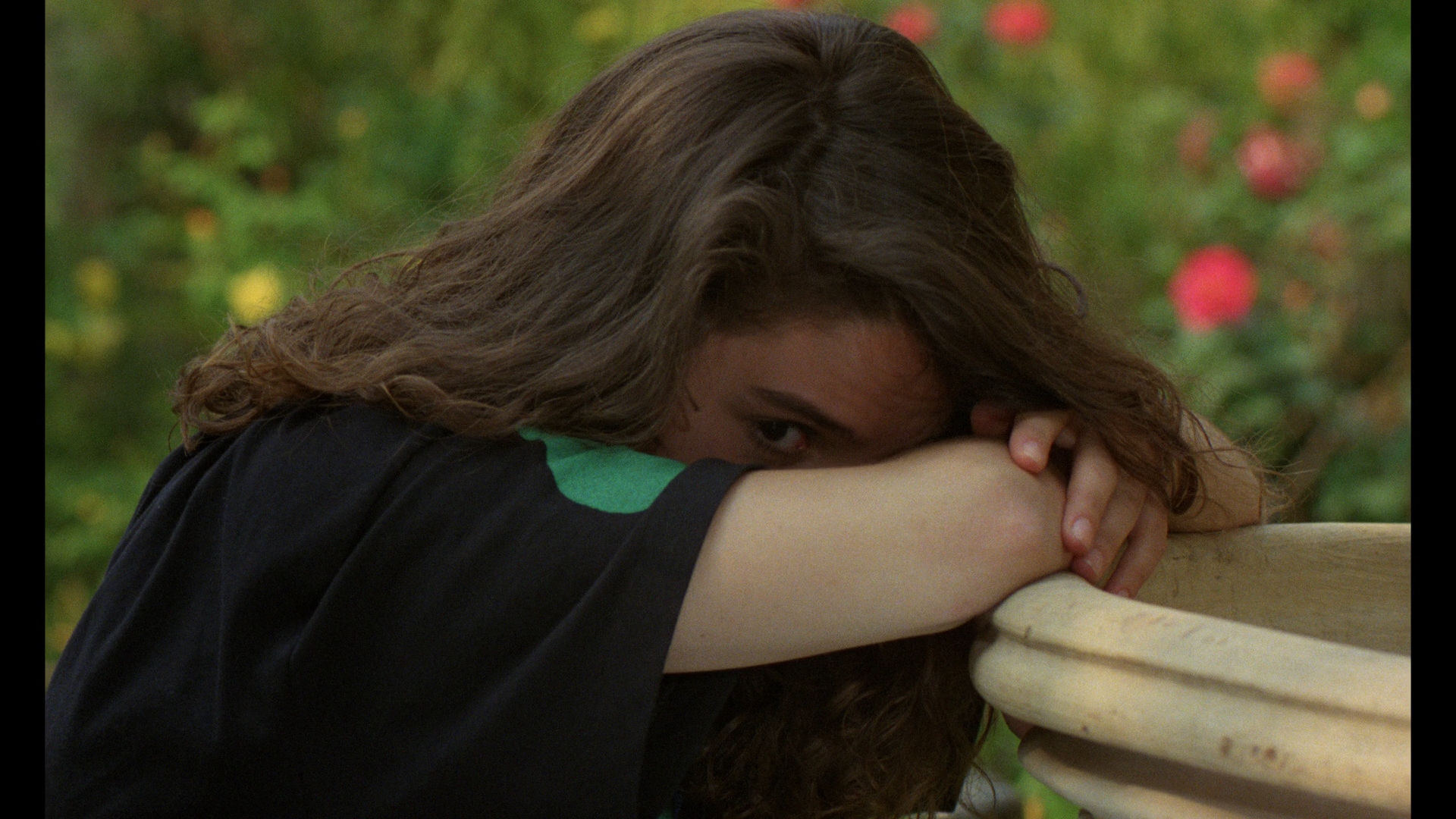
THE OGRE: Shriek Show DVD
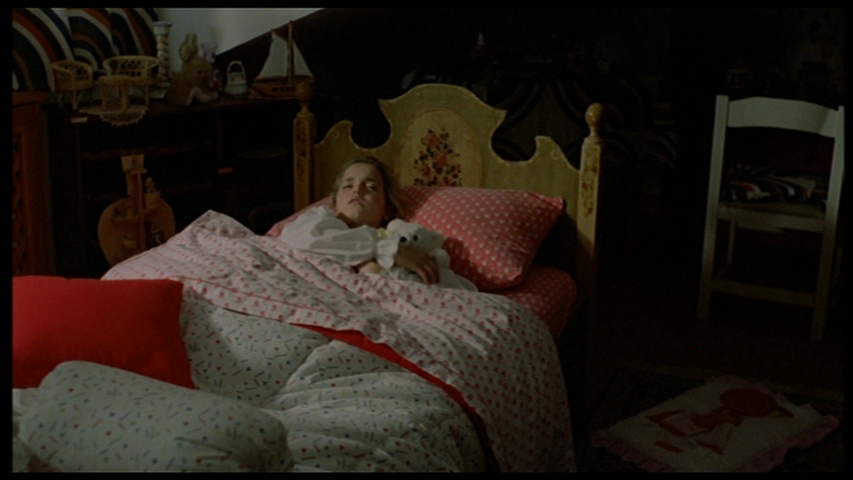
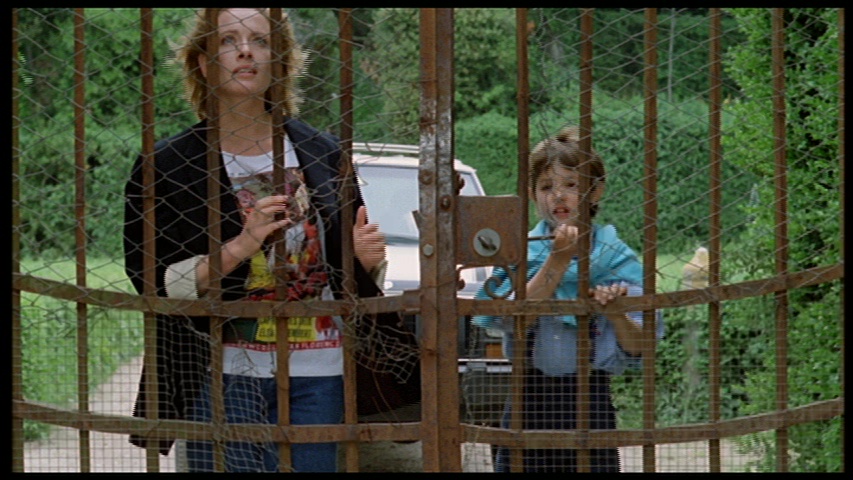
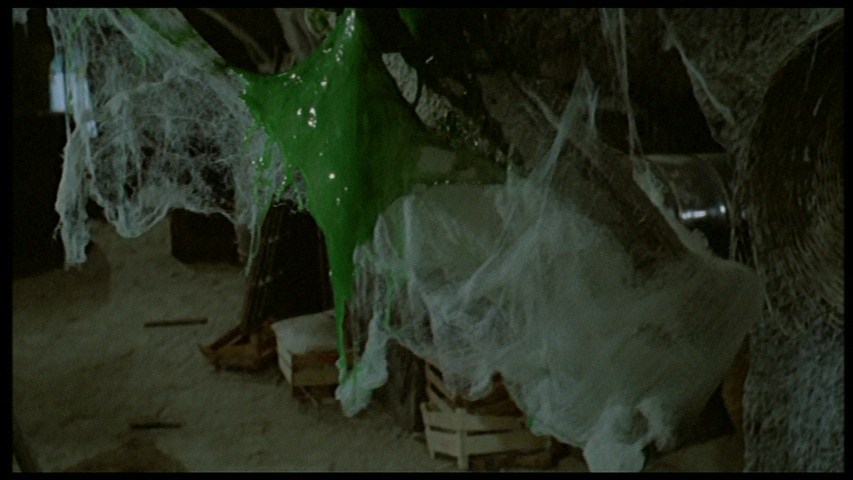
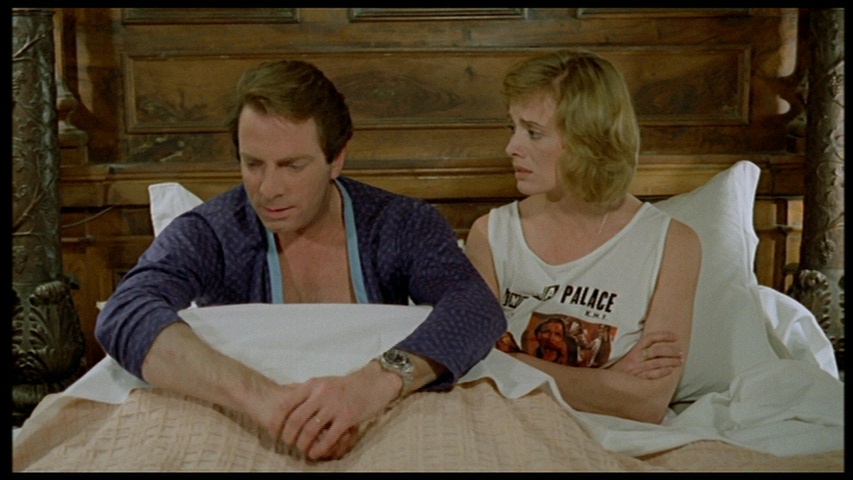
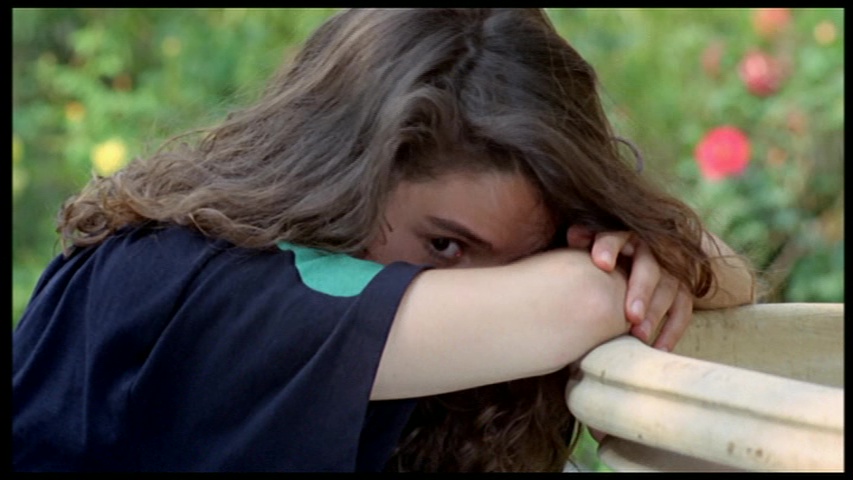
DINNER WITH A VAMPIRE: Cauldron Blu-ray
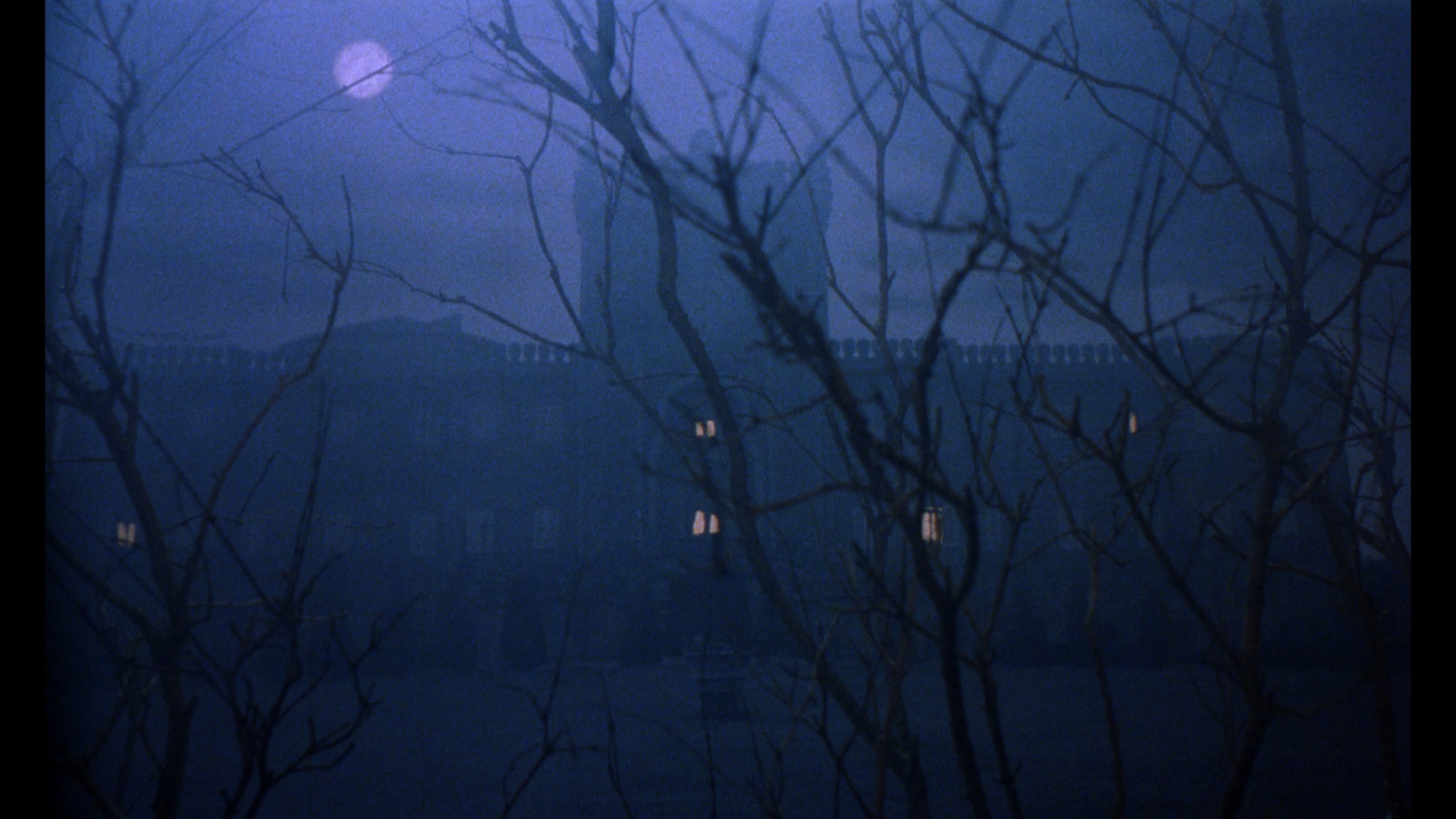
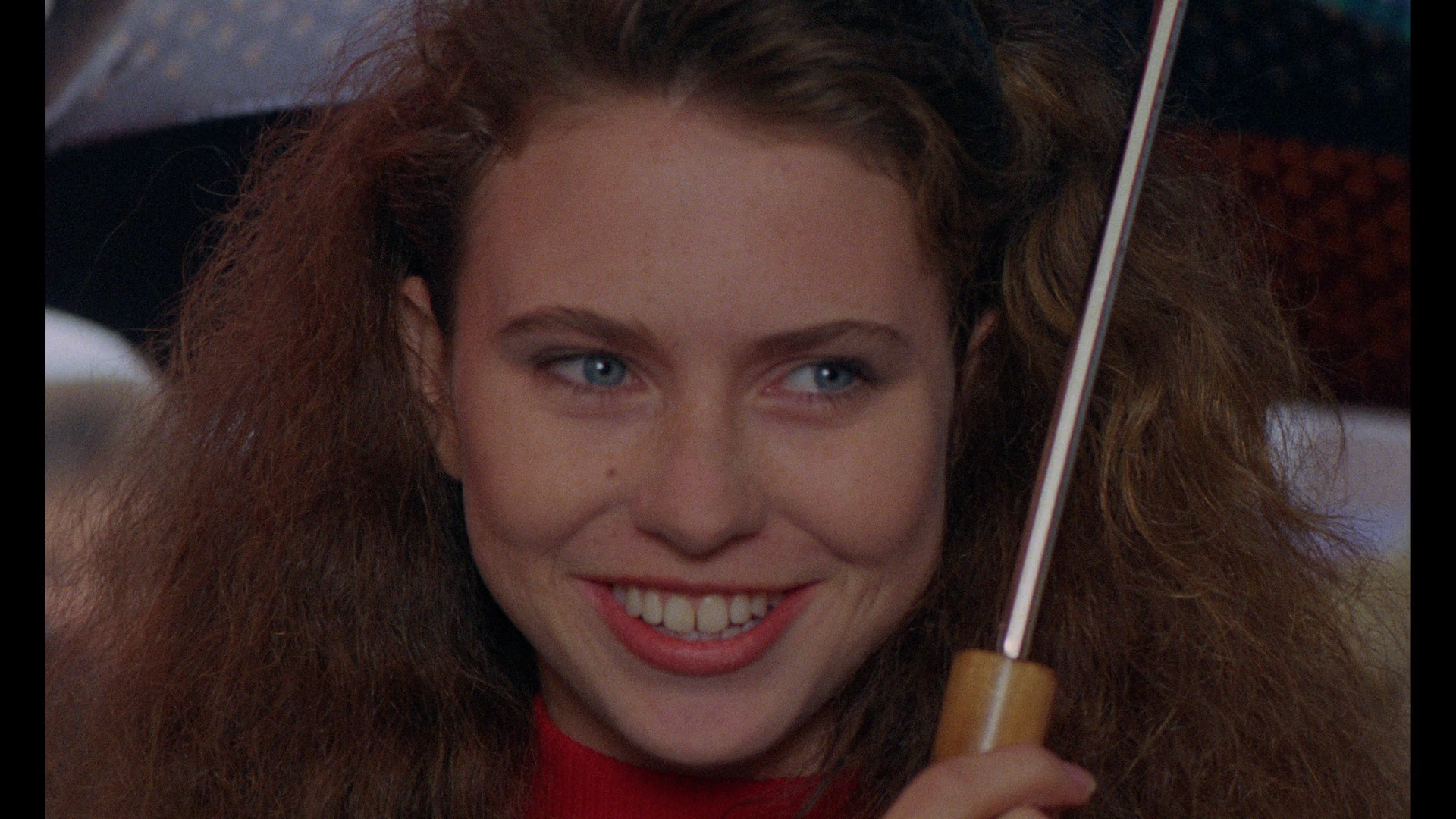
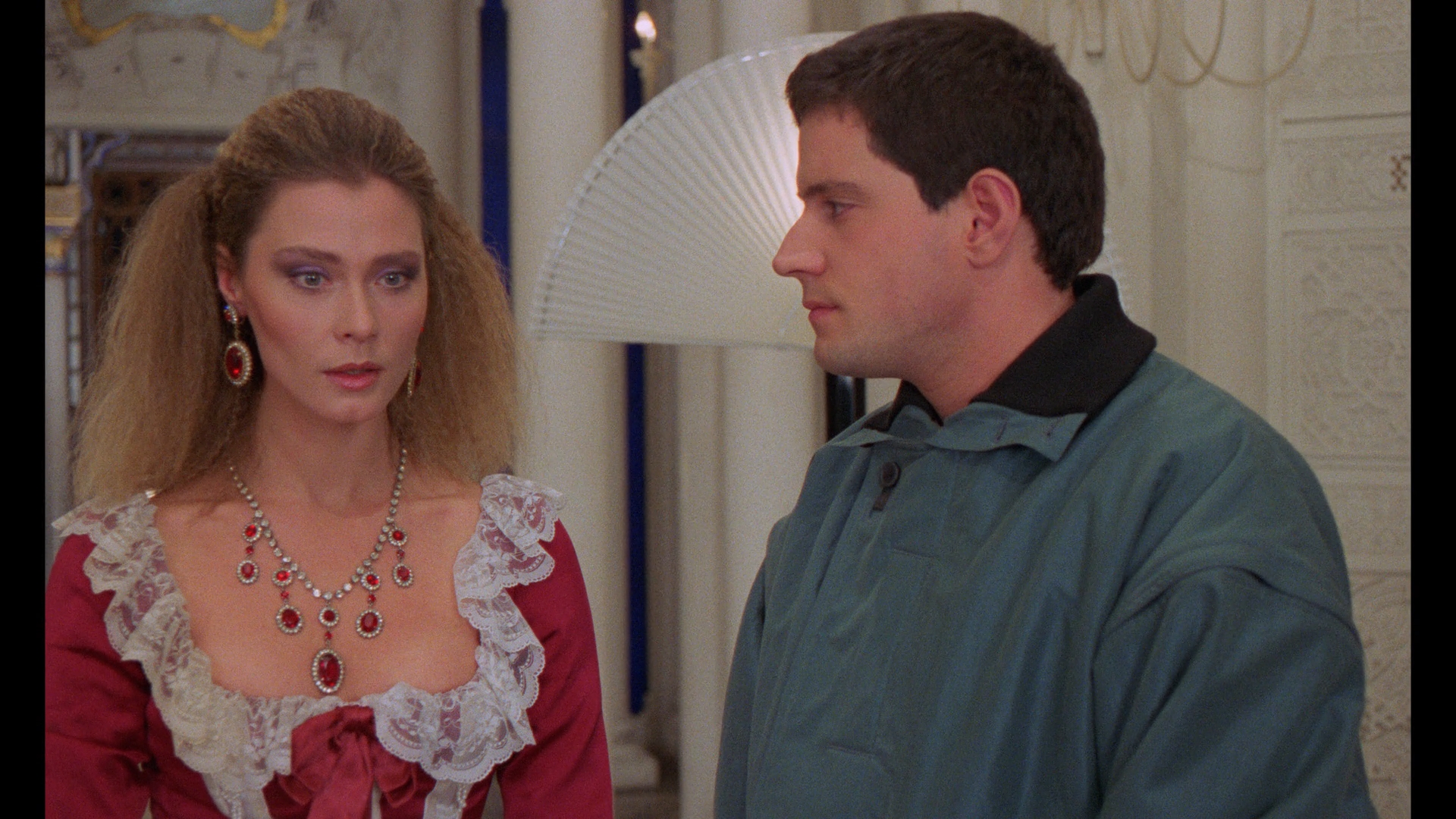
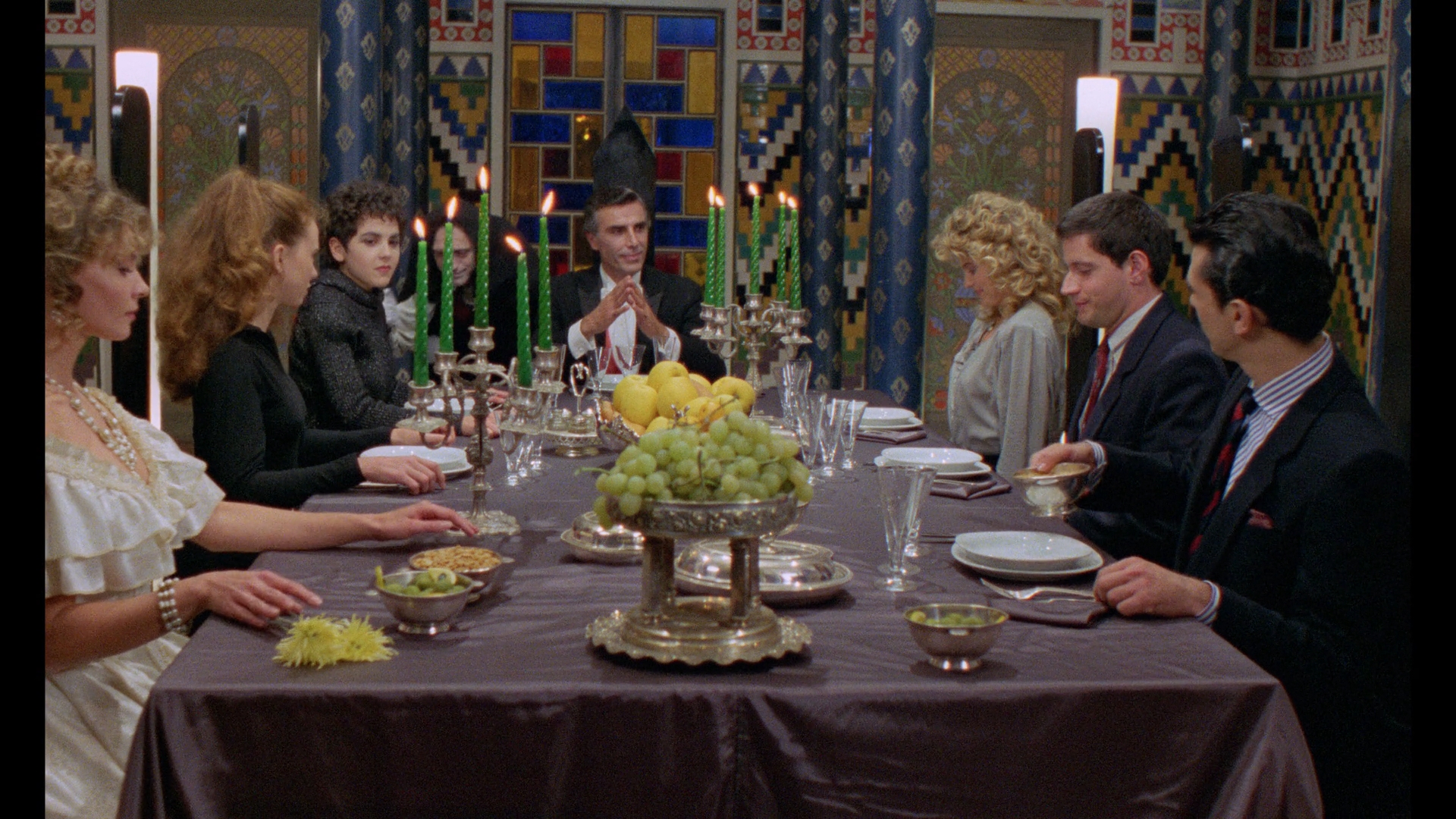
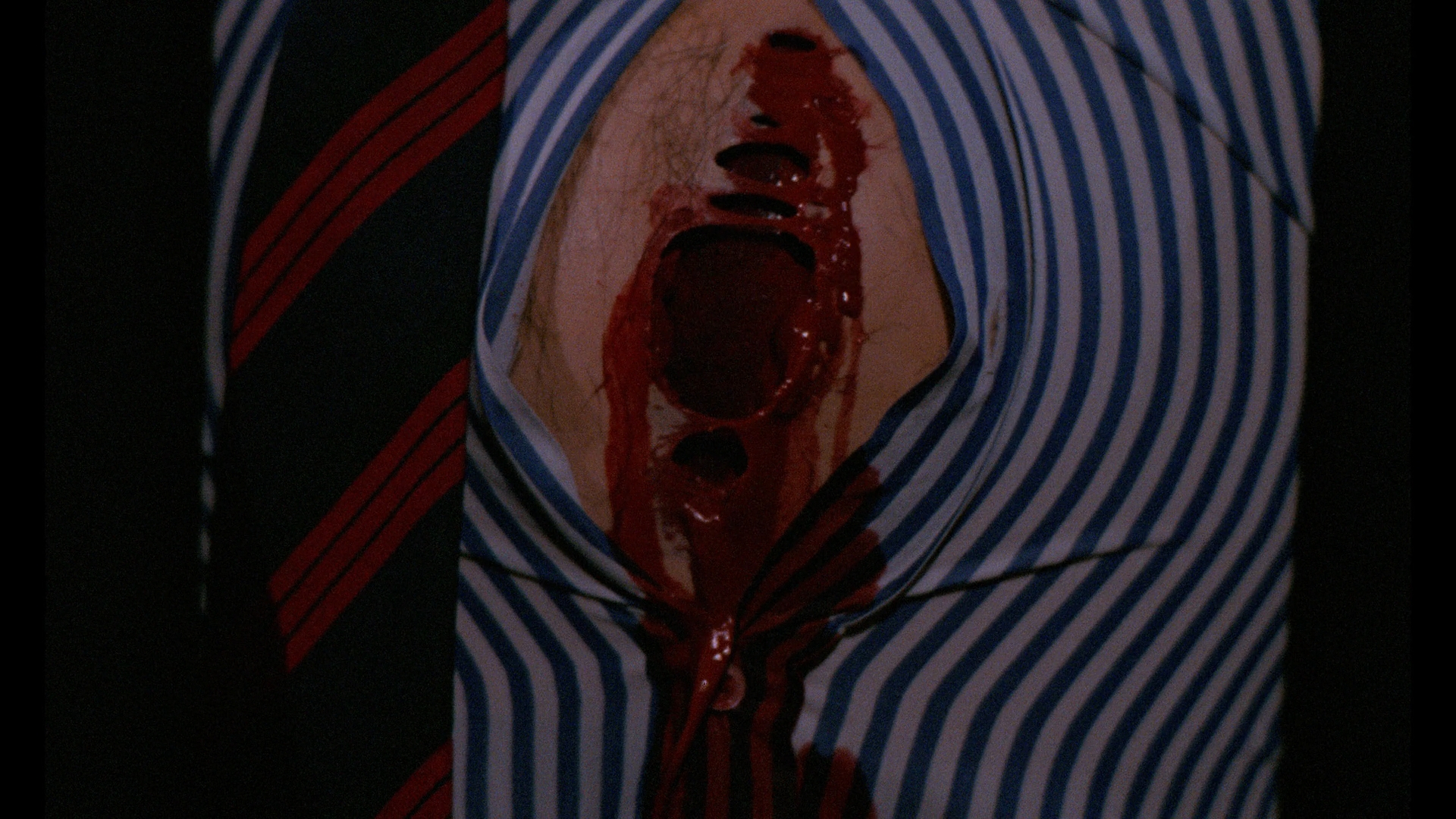
DINNER WITH A VAMPIRE: Mya DVD
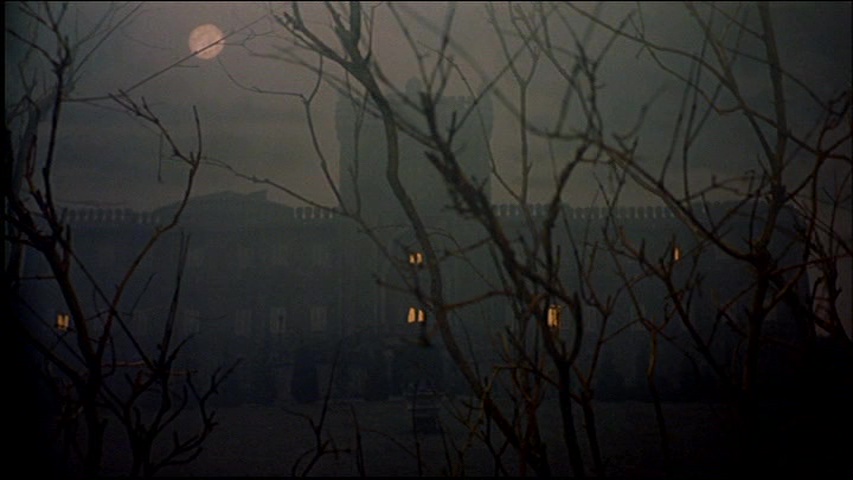
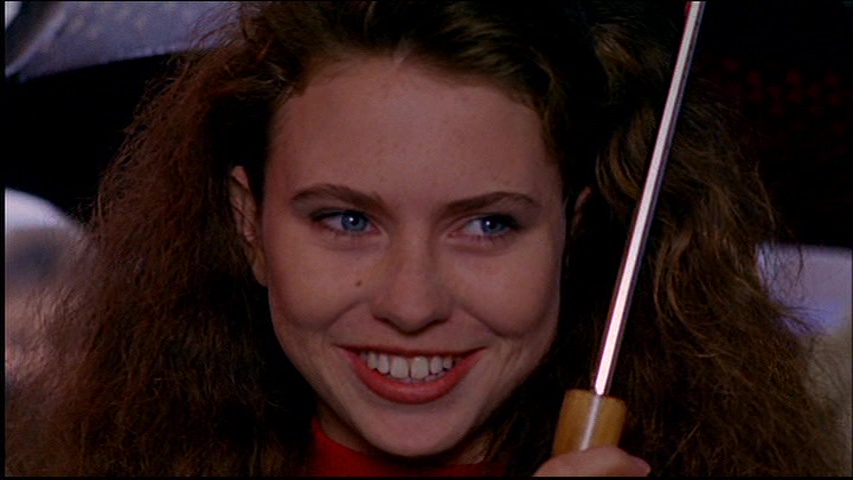
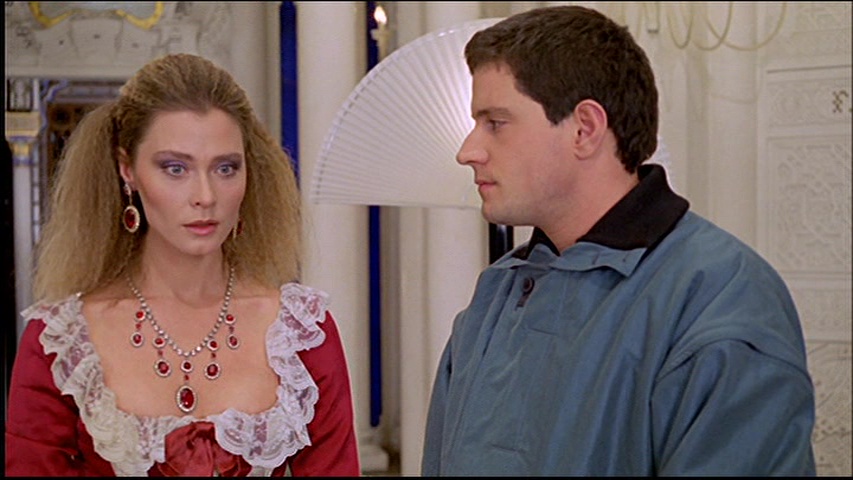
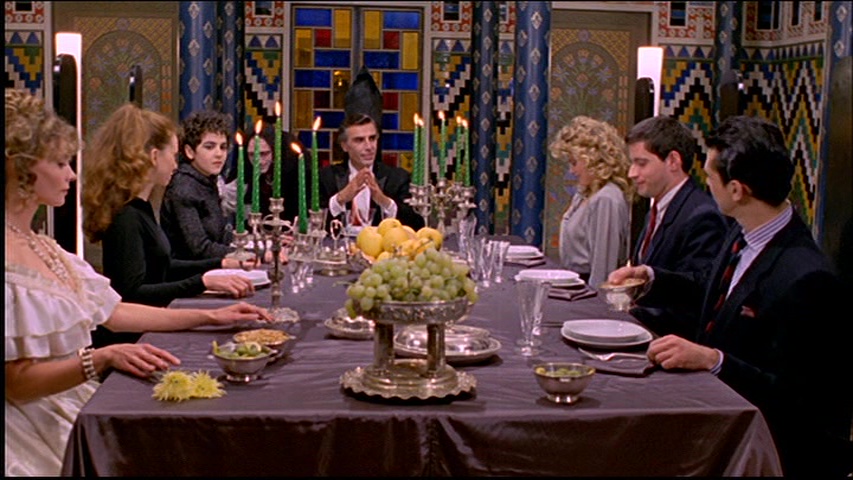
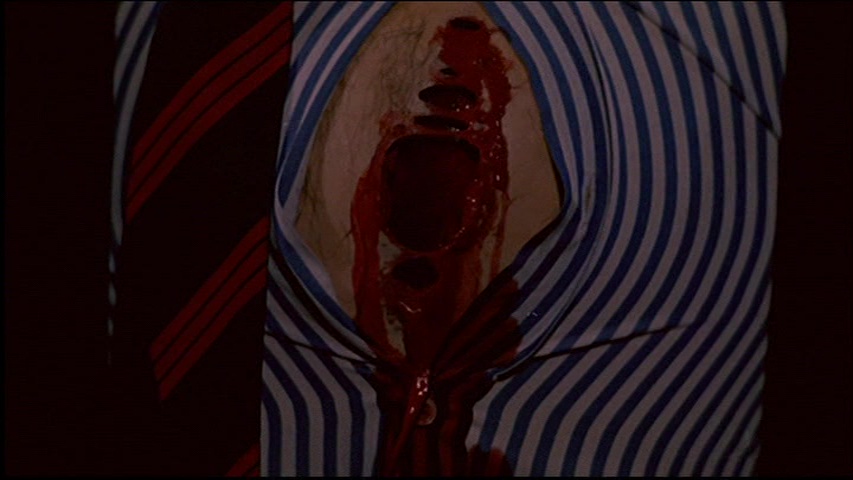
Reviewed on September 29, 2025

 success with Demons and Demons 2, filmmaker Lamberto Bava found himself waiting in
success with Demons and Demons 2, filmmaker Lamberto Bava found himself waiting in  vain for the intended launch of the third film and found himself turning in same direction as most of his peers: television. By the end of 1986, the theatrical market for genre films in Italy and abroad was drying up very quickly, with the small screen offering the more lucrative option for people like himself, Lucio Fulci, and Umberto Lenzi. In a flurry of activity, Bava churned out episodes of the oddball bite-sized giallo show Turno di notte, the stylish made-for-TV film The Mask of Satan, and a four-film series from '87 to '89, Brivido Giallo (or Giallo Thrill). That last project was borne out of an offer from producers including Luciano Martino to put together a quartet of low-cost features from a stack of unproduced screenplays by the prolific Dardano Sacchetti (none of them even remotely giallo-esque, oddly enough), with Bava putting his own stamp on the final scripts in various ways. The first two films were shot in rapid succession with only a weekend in between in 1987, and by the end of the experiment, all of them would end up being seen fairly widely in a variety of home video editions. Bava would later attempt a similar feat in the mid-'90s with another four-film horror series, Alta tensione (or High Tension), which was mostly buried and impossible to see in a decent edition until its 2025 release. On the other hand, Bava also found his greatest success ever in Europe on TV with the wildly popular Cave of the Golden Rose (or Fantaghirò), giving him enough leeway to occasionally dip his toes back in the horror pool from time to time. One issue the Brivido Giallo films have faced since the beginning is the expectations associated with them; while Italian genre production
vain for the intended launch of the third film and found himself turning in same direction as most of his peers: television. By the end of 1986, the theatrical market for genre films in Italy and abroad was drying up very quickly, with the small screen offering the more lucrative option for people like himself, Lucio Fulci, and Umberto Lenzi. In a flurry of activity, Bava churned out episodes of the oddball bite-sized giallo show Turno di notte, the stylish made-for-TV film The Mask of Satan, and a four-film series from '87 to '89, Brivido Giallo (or Giallo Thrill). That last project was borne out of an offer from producers including Luciano Martino to put together a quartet of low-cost features from a stack of unproduced screenplays by the prolific Dardano Sacchetti (none of them even remotely giallo-esque, oddly enough), with Bava putting his own stamp on the final scripts in various ways. The first two films were shot in rapid succession with only a weekend in between in 1987, and by the end of the experiment, all of them would end up being seen fairly widely in a variety of home video editions. Bava would later attempt a similar feat in the mid-'90s with another four-film horror series, Alta tensione (or High Tension), which was mostly buried and impossible to see in a decent edition until its 2025 release. On the other hand, Bava also found his greatest success ever in Europe on TV with the wildly popular Cave of the Golden Rose (or Fantaghirò), giving him enough leeway to occasionally dip his toes back in the horror pool from time to time. One issue the Brivido Giallo films have faced since the beginning is the expectations associated with them; while Italian genre production  was essentially in a state of collapse, U.S. and U.K. audiences were suddenly embracing them like never before with flourishing coverage in magazines like Fangoria, Deep Red, and GoreZone. These films were being announced and reported on as if they were going to be gore-sprayed spectacles on the level of Demons, something they weren't even attempting; a similar fate was also befalling Fulci's output around this time with each new title trumpeted as a splattery return to form that simply couldn't be feasible. Seen on their own terms, the Brivido Giallo films are entertaining love letters to the horror genre with genuinely impressive production design and makeup effects, not to mention effective scores by Simon Boswell (Demons 2, Stagefright) to give it that warm, familiar atmosphere only that era could capture. All of the films were finally collected together in the U.S. for their Blu-ray debut from
was essentially in a state of collapse, U.S. and U.K. audiences were suddenly embracing them like never before with flourishing coverage in magazines like Fangoria, Deep Red, and GoreZone. These films were being announced and reported on as if they were going to be gore-sprayed spectacles on the level of Demons, something they weren't even attempting; a similar fate was also befalling Fulci's output around this time with each new title trumpeted as a splattery return to form that simply couldn't be feasible. Seen on their own terms, the Brivido Giallo films are entertaining love letters to the horror genre with genuinely impressive production design and makeup effects, not to mention effective scores by Simon Boswell (Demons 2, Stagefright) to give it that warm, familiar atmosphere only that era could capture. All of the films were finally collected together in the U.S. for their Blu-ray debut from  Cauldron Films as part of a nicely designed boxed set, limited to 2500 copies with each disc in its own case featuring a fold-out poster with nice artwork by Eric Adrian Lee.
Cauldron Films as part of a nicely designed boxed set, limited to 2500 copies with each disc in its own case featuring a fold-out poster with nice artwork by Eric Adrian Lee.  Headless Ghost -- and on that front it essentially delivers. The crypt itself looks great (something that was hard to appreciate thanks to decades of awful video transfers), the monster effects are sometimes quite effective, and all the wandering around through cobwebs and colorful lighting gives it a hangout vibe that clearly doesn't work for some. Like the remaining three films, this was shot entirely in English with the cast dubbed later to sound American; in this case the English track works just fine and fits a little more than the clunkier dubbing of the Italian track. The film was issued on VHS and then on DVD including a so-so U.S. one from the dubious Mya Communications in 2009, but the Blu-ray blows that out of the water with a pristine 2K restoration that reveals layers of detail in the sets
Headless Ghost -- and on that front it essentially delivers. The crypt itself looks great (something that was hard to appreciate thanks to decades of awful video transfers), the monster effects are sometimes quite effective, and all the wandering around through cobwebs and colorful lighting gives it a hangout vibe that clearly doesn't work for some. Like the remaining three films, this was shot entirely in English with the cast dubbed later to sound American; in this case the English track works just fine and fits a little more than the clunkier dubbing of the Italian track. The film was issued on VHS and then on DVD including a so-so U.S. one from the dubious Mya Communications in 2009, but the Blu-ray blows that out of the water with a pristine 2K restoration that reveals layers of detail in the sets  that make this a far more entertaining watch. It really looks sumptuous now and shows off Bava's visual skills enough that even haters might find this worth another look. The DTS-HD MA 2.0 mono English and Italian tracks are included (as with the other three films) with optional English SDH or English-translated subtitles. One interesting wrinkle here is that the English version feels pretty wholesome script-wise, while the Italian dialogue is way more profane and would easily get this slapped with an R rating. A new audio commentary by Eugenio Ercolani (who also created all of the new video bonus features) and Nanni Cobretti is both a solid intro to the nuts and bolts of this series and the state of Bava's career while also working as an overview of the Italian film industry in general in the later stretch of the '80s as things transitioned past the point of no return in movie theaters.
that make this a far more entertaining watch. It really looks sumptuous now and shows off Bava's visual skills enough that even haters might find this worth another look. The DTS-HD MA 2.0 mono English and Italian tracks are included (as with the other three films) with optional English SDH or English-translated subtitles. One interesting wrinkle here is that the English version feels pretty wholesome script-wise, while the Italian dialogue is way more profane and would easily get this slapped with an R rating. A new audio commentary by Eugenio Ercolani (who also created all of the new video bonus features) and Nanni Cobretti is both a solid intro to the nuts and bolts of this series and the state of Bava's career while also working as an overview of the Italian film industry in general in the later stretch of the '80s as things transitioned past the point of no return in movie theaters. several new cues here from The Ogre and Dinner with a
several new cues here from The Ogre and Dinner with a  Vampire.
Vampire. and increasing Linda's sense of
and increasing Linda's sense of  guilt.
guilt. better detail. This is the one film in the set where the Italian track comes out as the clear winner, sounding much punchier and more layered than the English one including extensive sound effects and ambiance only in the Italian version.
better detail. This is the one film in the set where the Italian track comes out as the clear winner, sounding much punchier and more layered than the English one including extensive sound effects and ambiance only in the Italian version.  By comparison the English track sounds flat and lifeless, with Brandon's distinctive real voice replaced here to the track's detriment. A new commentary by Ercolani and Troy Howarth covers all the essential bases for the film putting it in context within the larger series, tying together echoes of Bava and other genre films and novels, the Boswell-Bava partnership, the logistics of putting the films together (and why some of them didn't see the light of a TV screen until 1989), and the uneasy relationship between TV and cinemas moving into the '90s. In "The Achievements of a Good Baddie" (23m34s), Brandon chats in alternating English and subtitled Italian about his longtime friendship and collaborations with Bava, memories of the lake shooting location, his rapport with his fellow actors including playing backgammon regularly with Barberini, his career-making work with Lindsay Kemp, and his approach to playing genre films and villains in particular. Bava appears in "Deadly Love Triangle" (15m16s) elaborating on the speedy jump into this film right after the first installment and the process of choosing the Sacchetti script, which was famously a source of contention with Lucio Fulci. He also explains how some of the more inventive shock effects were achieved in single takes, as well as praise for the effective special effects. In "The Eye of the Bavas" (10m45s), Battaglia returns for more detail about his work with Bava and prior films with Pupi Avati, the luxury of doing 35mm TV productions compared to the usual 16mm, the effect of working with at the atmospheric location, and the experimental effects he used in some shots including some Vittorio Storaro-style color filters. Finally in "A Lake to Die For" (18m17s), Geleng recalls this being the simplest of the four as far as his job went while also detailing his art background in more detail
By comparison the English track sounds flat and lifeless, with Brandon's distinctive real voice replaced here to the track's detriment. A new commentary by Ercolani and Troy Howarth covers all the essential bases for the film putting it in context within the larger series, tying together echoes of Bava and other genre films and novels, the Boswell-Bava partnership, the logistics of putting the films together (and why some of them didn't see the light of a TV screen until 1989), and the uneasy relationship between TV and cinemas moving into the '90s. In "The Achievements of a Good Baddie" (23m34s), Brandon chats in alternating English and subtitled Italian about his longtime friendship and collaborations with Bava, memories of the lake shooting location, his rapport with his fellow actors including playing backgammon regularly with Barberini, his career-making work with Lindsay Kemp, and his approach to playing genre films and villains in particular. Bava appears in "Deadly Love Triangle" (15m16s) elaborating on the speedy jump into this film right after the first installment and the process of choosing the Sacchetti script, which was famously a source of contention with Lucio Fulci. He also explains how some of the more inventive shock effects were achieved in single takes, as well as praise for the effective special effects. In "The Eye of the Bavas" (10m45s), Battaglia returns for more detail about his work with Bava and prior films with Pupi Avati, the luxury of doing 35mm TV productions compared to the usual 16mm, the effect of working with at the atmospheric location, and the experimental effects he used in some shots including some Vittorio Storaro-style color filters. Finally in "A Lake to Die For" (18m17s), Geleng recalls this being the simplest of the four as far as his job went while also detailing his art background in more detail  and explaining how he got into the
and explaining how he got into the  business.
business.  does fine work on the score, including
does fine work on the score, including  a memorable main theme.
a memorable main theme.  one substantial extra, a 10m40s Bava interview about the film's TV origins and the story behind the series in
one substantial extra, a 10m40s Bava interview about the film's TV origins and the story behind the series in  general.
general.  with the sets, lighting, and music
with the sets, lighting, and music  working harmoniously to create a giddy eerie atmosphere without spending much money, and there are some nice nods to the various formats of home entertainment including a great VHS gag and a major plot point involving celluloid itself. This one has really looked the best over the years on home video with the Mya DVD actually offering a good representation of the intended look apart from missing the day-for-night tints in some outdoor shots. That's corrected on the Cauldron Blu-ray (see below), which looks excellent and shows off the little background details with nice clarity throughout. Again it's pretty much a draw between the English and Italian tracks here, though the latter does add a lot of off-screen dialogue that makes it interesting to compare. This time commentary duties are handled by this writer with Howarth and Eroclani, so no evaluation here but hopefully you'll find it worth a listen. The last Bava interview here, "A Vampire Called Television" (13m28s), is an overview of how he and his father approached working in TV, the format's encroaching erosion of the theatrical audience in the '80s, the status of this one as his favorite of the four, and his great pleasure with the casting choices. Boswell himself turns up for a new interview here (13m55s) about his history with Bava including the confidence he felt after his first full score with Demons 2, the opportunity of playing in a lot of moods with these films, the process of creating his music outside of Italy, and the approaches he took for the musical style of each film from the castanet grooves of Dinner to the "carpet" ambiance of The Ogre. The final Geleng interview, "Dracula's Decorator" (15m48s), covers the process of selling films with memorable monsters long before they're actually shot, the role of poster artists, the use of proportion in coming up with monster designs, the discovery of the Florence hotel that serves as the primary location here, and a really hilarious bit where he reveals the cast member he secretly dated after this for a while (but completely blanks on her name). Finally "The Career of a Uruguayan Vampire" (20m34s) uses audio of a Hilton interview to cover the trajectory of his entire professional experience from his first part through his auditioning for Lucio Fulci to his favorite highlights from the westerns, comedies, and thrillers he made over the years. The set also comes with an insert illustrated booklet featuring an overview essay by Ercolani laying out the essentials of the series' origins, its place in the evolution of Italian TV, and its significance in Bava's career.
working harmoniously to create a giddy eerie atmosphere without spending much money, and there are some nice nods to the various formats of home entertainment including a great VHS gag and a major plot point involving celluloid itself. This one has really looked the best over the years on home video with the Mya DVD actually offering a good representation of the intended look apart from missing the day-for-night tints in some outdoor shots. That's corrected on the Cauldron Blu-ray (see below), which looks excellent and shows off the little background details with nice clarity throughout. Again it's pretty much a draw between the English and Italian tracks here, though the latter does add a lot of off-screen dialogue that makes it interesting to compare. This time commentary duties are handled by this writer with Howarth and Eroclani, so no evaluation here but hopefully you'll find it worth a listen. The last Bava interview here, "A Vampire Called Television" (13m28s), is an overview of how he and his father approached working in TV, the format's encroaching erosion of the theatrical audience in the '80s, the status of this one as his favorite of the four, and his great pleasure with the casting choices. Boswell himself turns up for a new interview here (13m55s) about his history with Bava including the confidence he felt after his first full score with Demons 2, the opportunity of playing in a lot of moods with these films, the process of creating his music outside of Italy, and the approaches he took for the musical style of each film from the castanet grooves of Dinner to the "carpet" ambiance of The Ogre. The final Geleng interview, "Dracula's Decorator" (15m48s), covers the process of selling films with memorable monsters long before they're actually shot, the role of poster artists, the use of proportion in coming up with monster designs, the discovery of the Florence hotel that serves as the primary location here, and a really hilarious bit where he reveals the cast member he secretly dated after this for a while (but completely blanks on her name). Finally "The Career of a Uruguayan Vampire" (20m34s) uses audio of a Hilton interview to cover the trajectory of his entire professional experience from his first part through his auditioning for Lucio Fulci to his favorite highlights from the westerns, comedies, and thrillers he made over the years. The set also comes with an insert illustrated booklet featuring an overview essay by Ercolani laying out the essentials of the series' origins, its place in the evolution of Italian TV, and its significance in Bava's career. ![]()